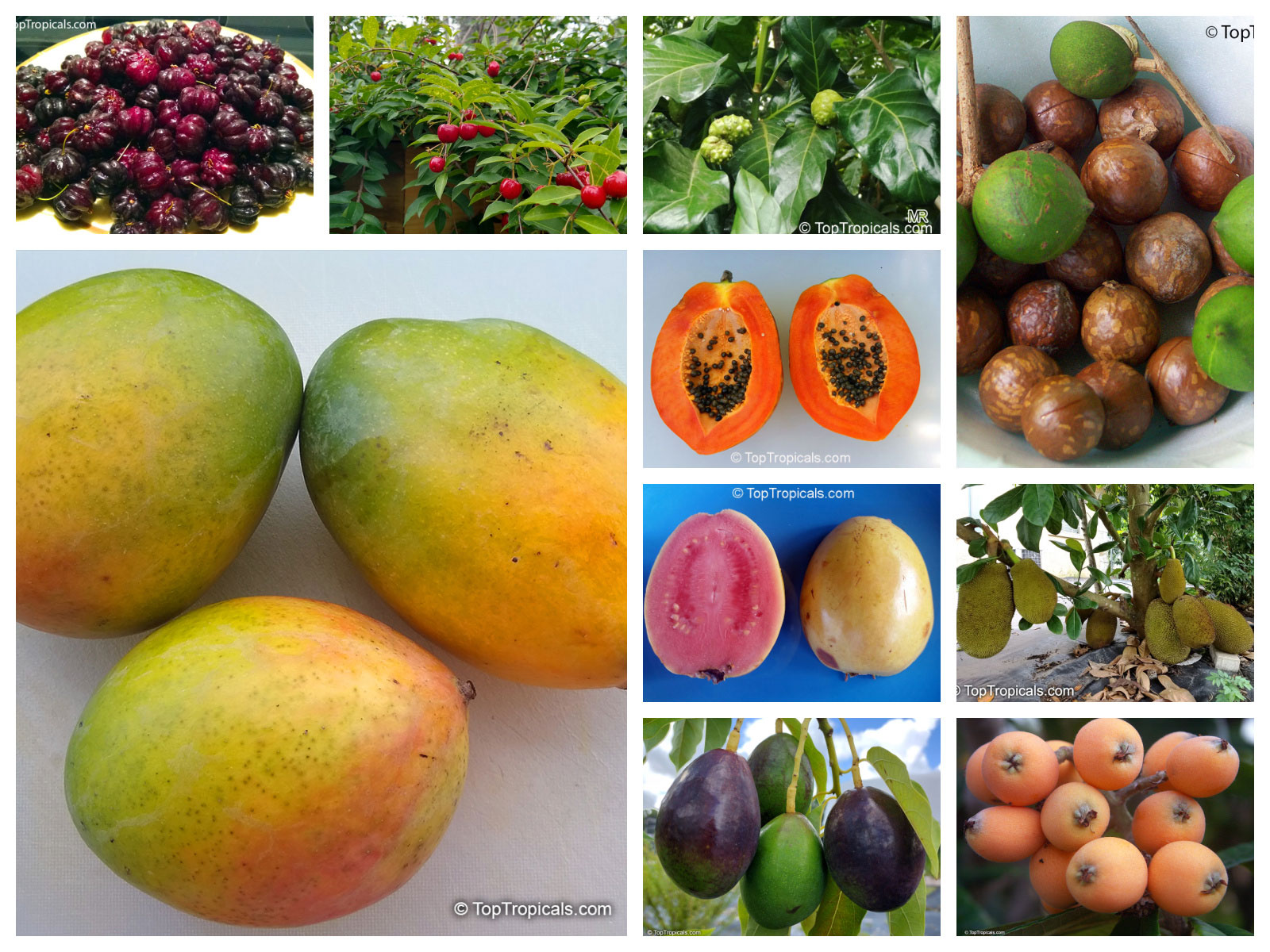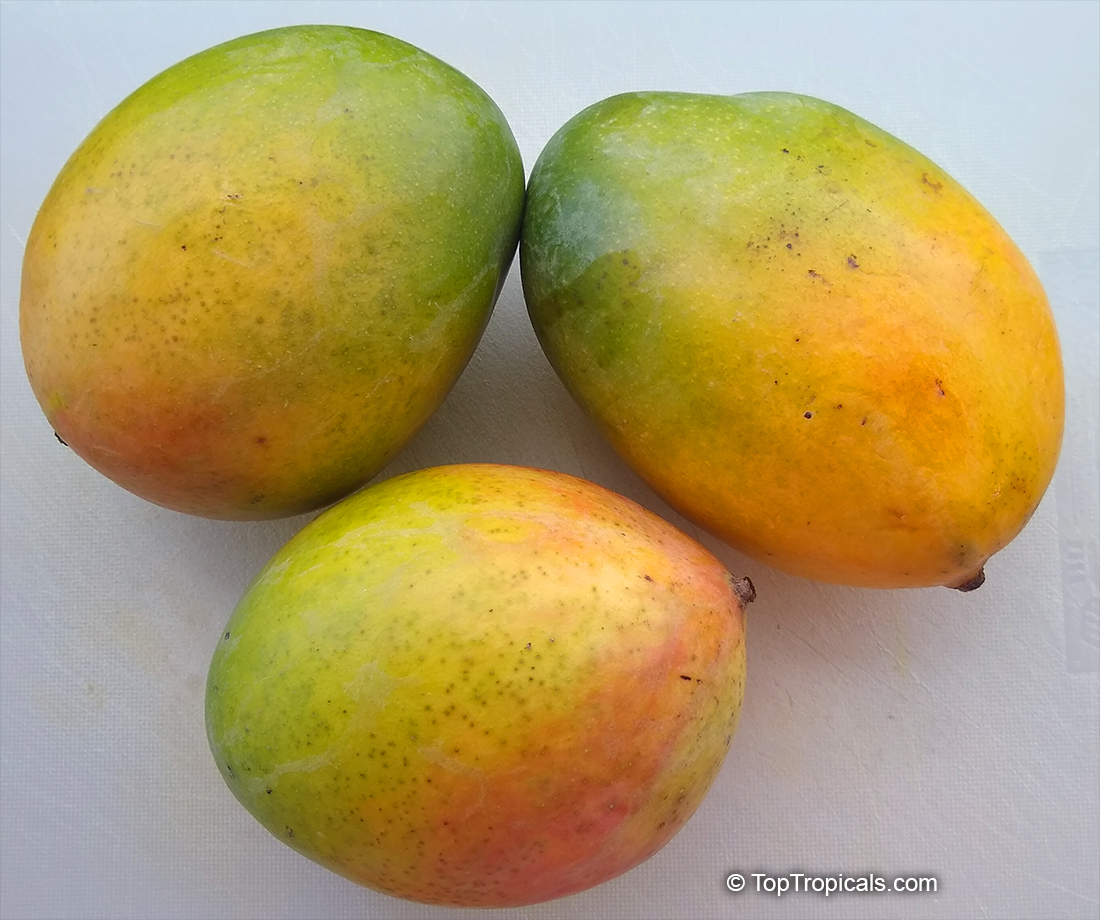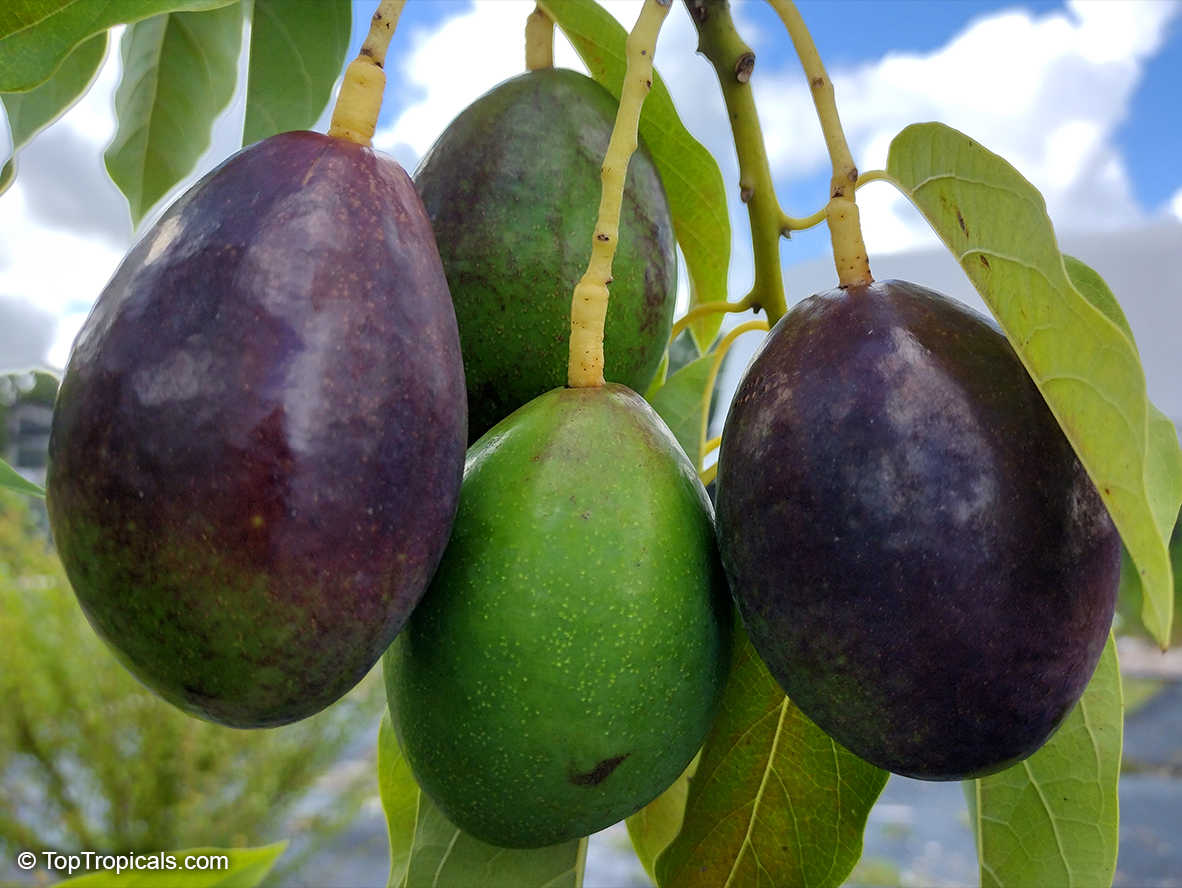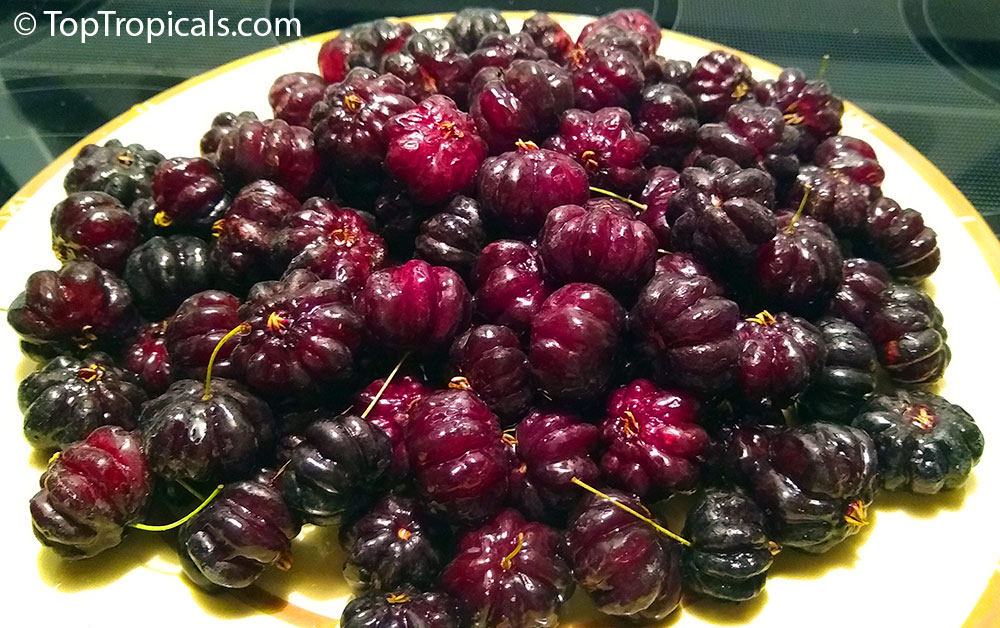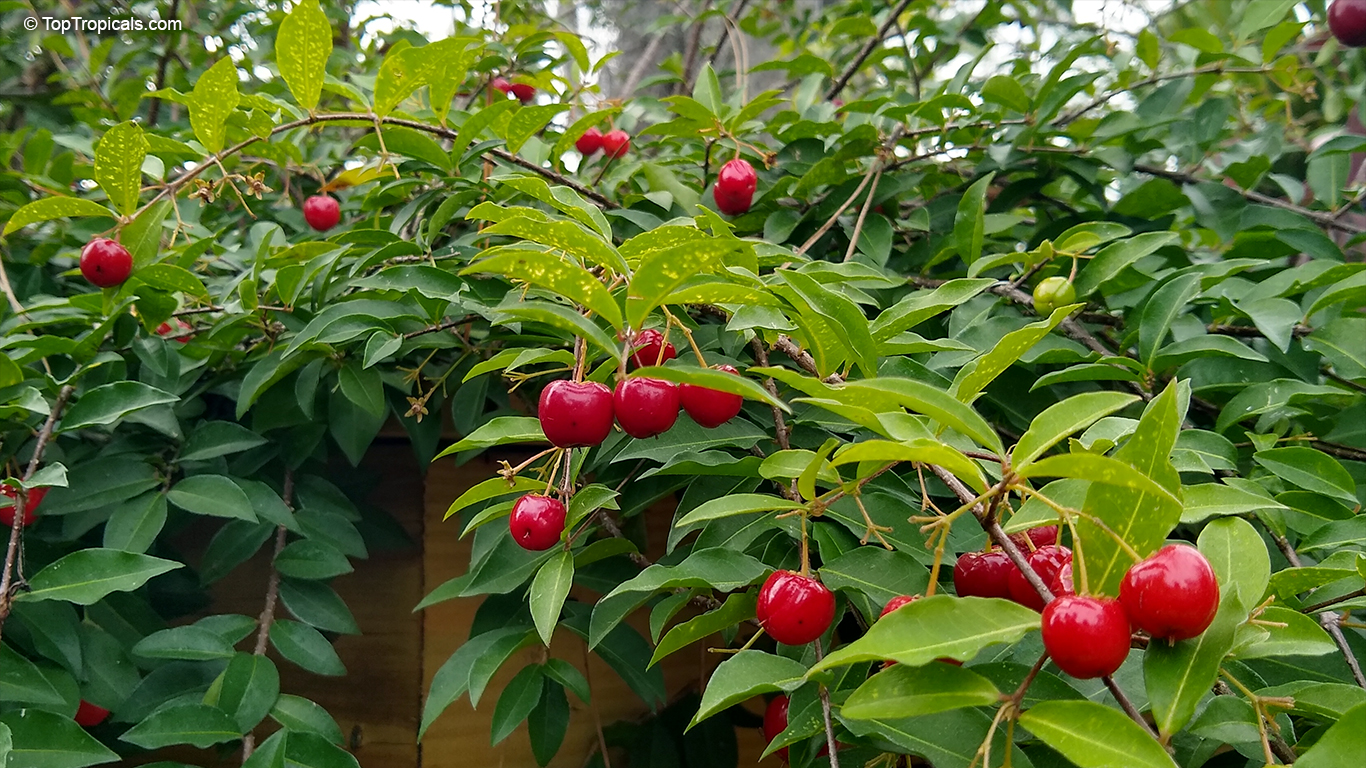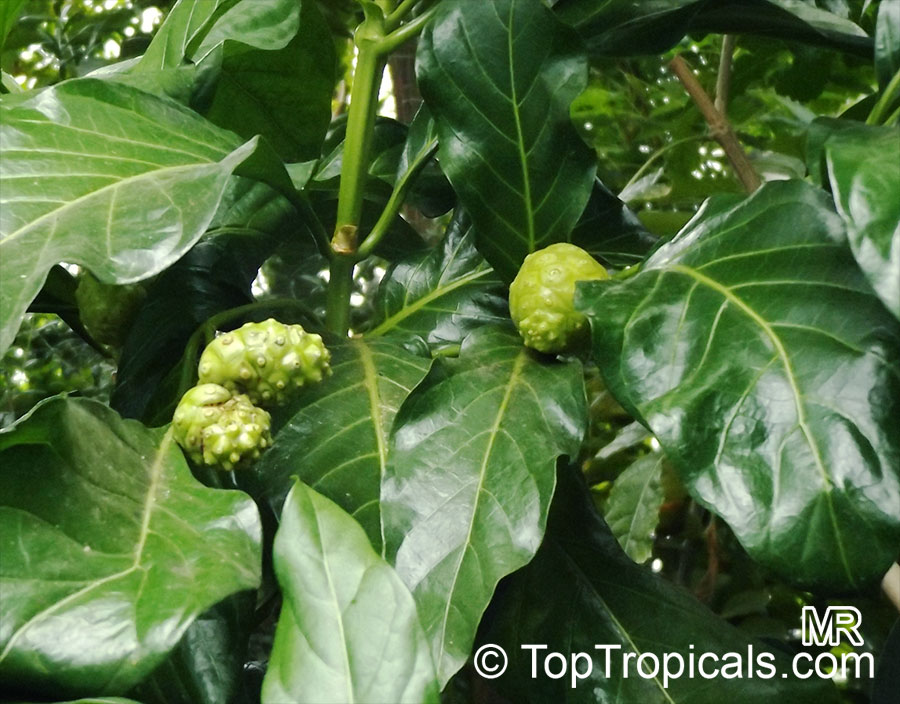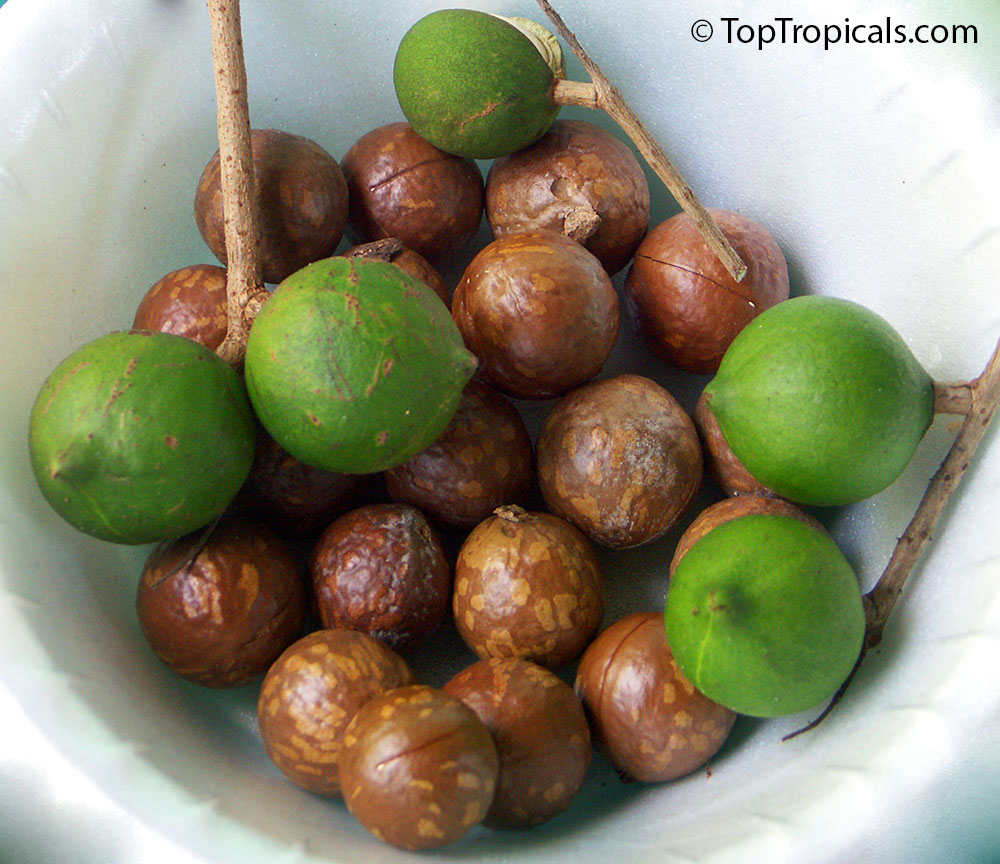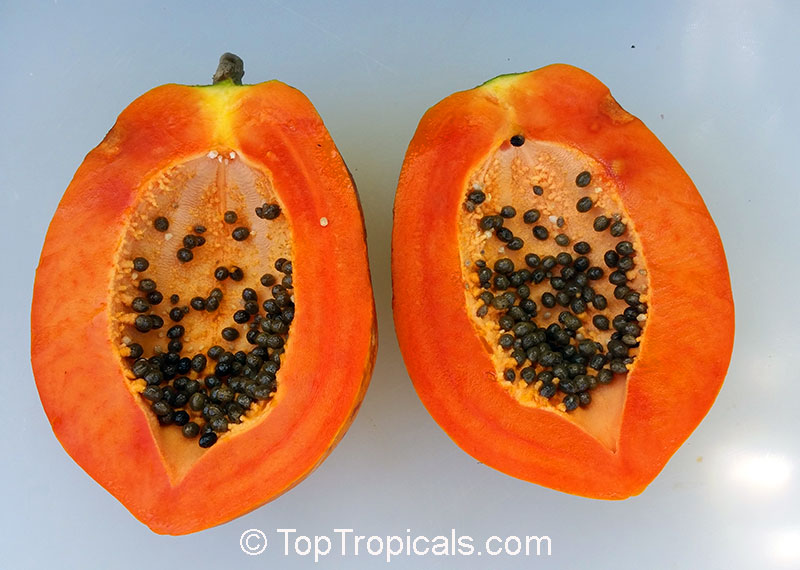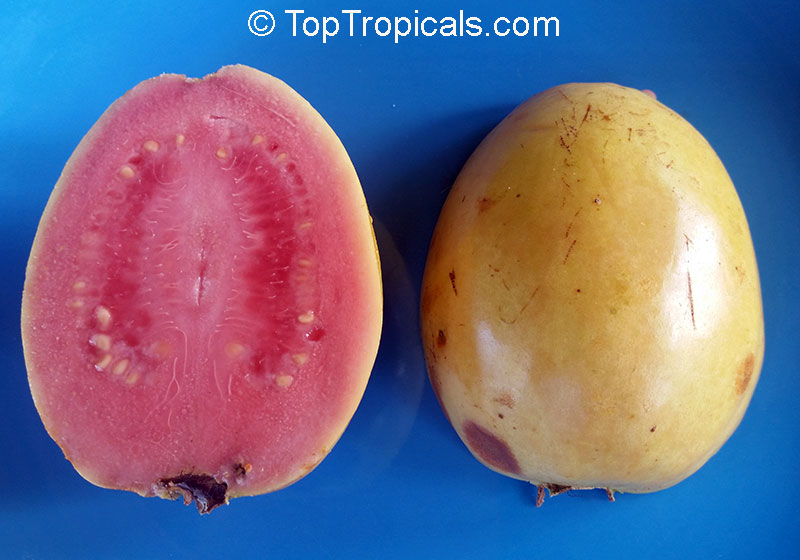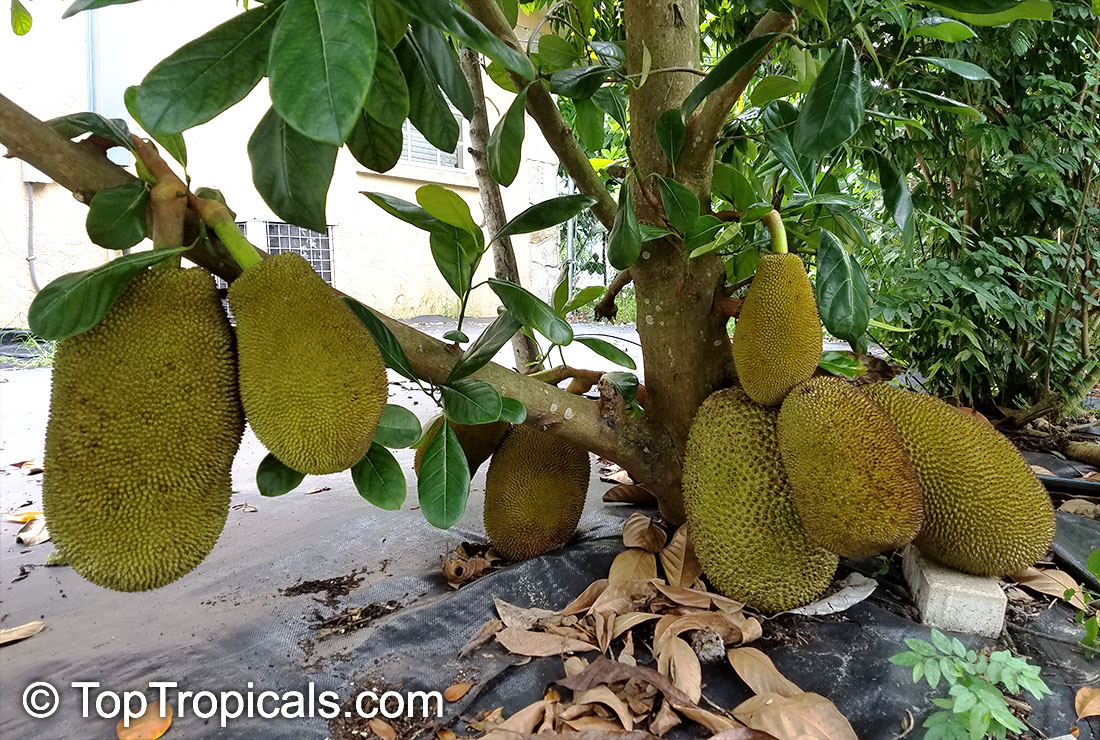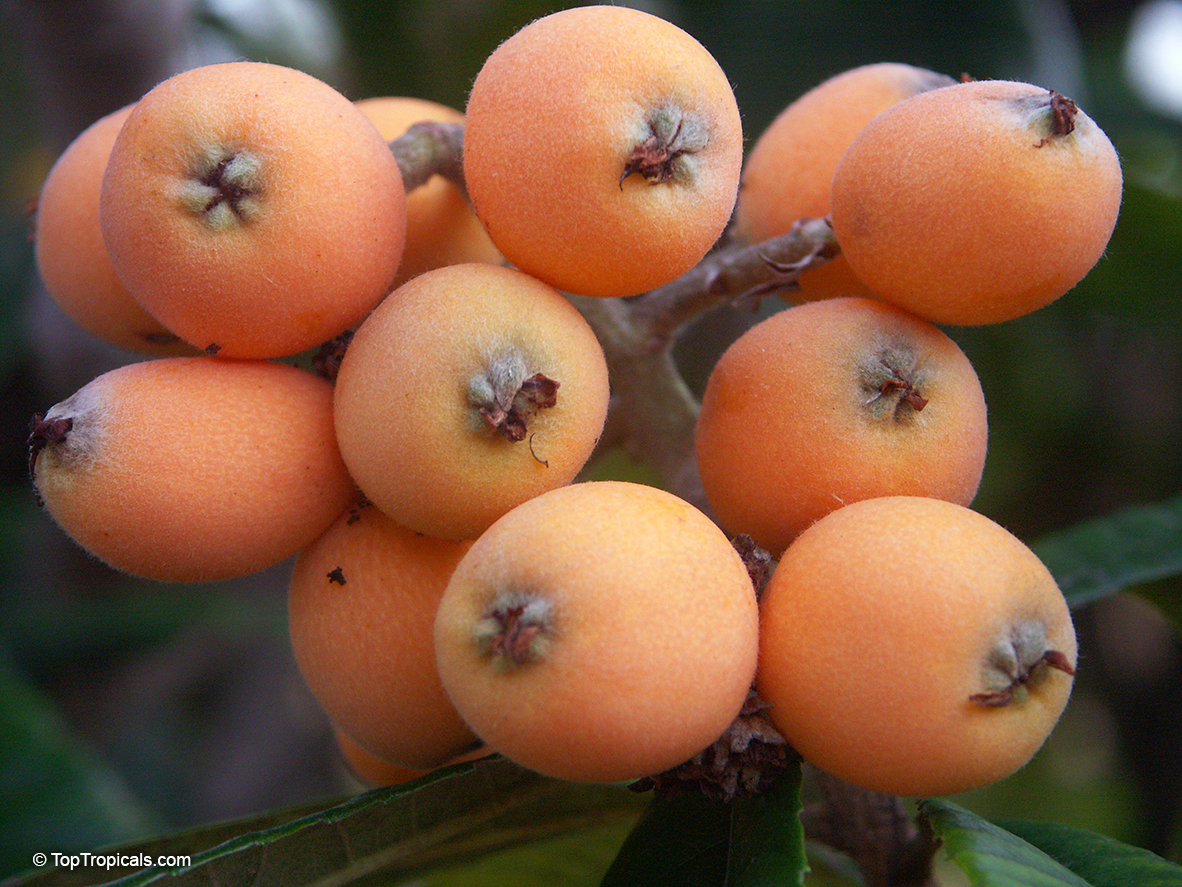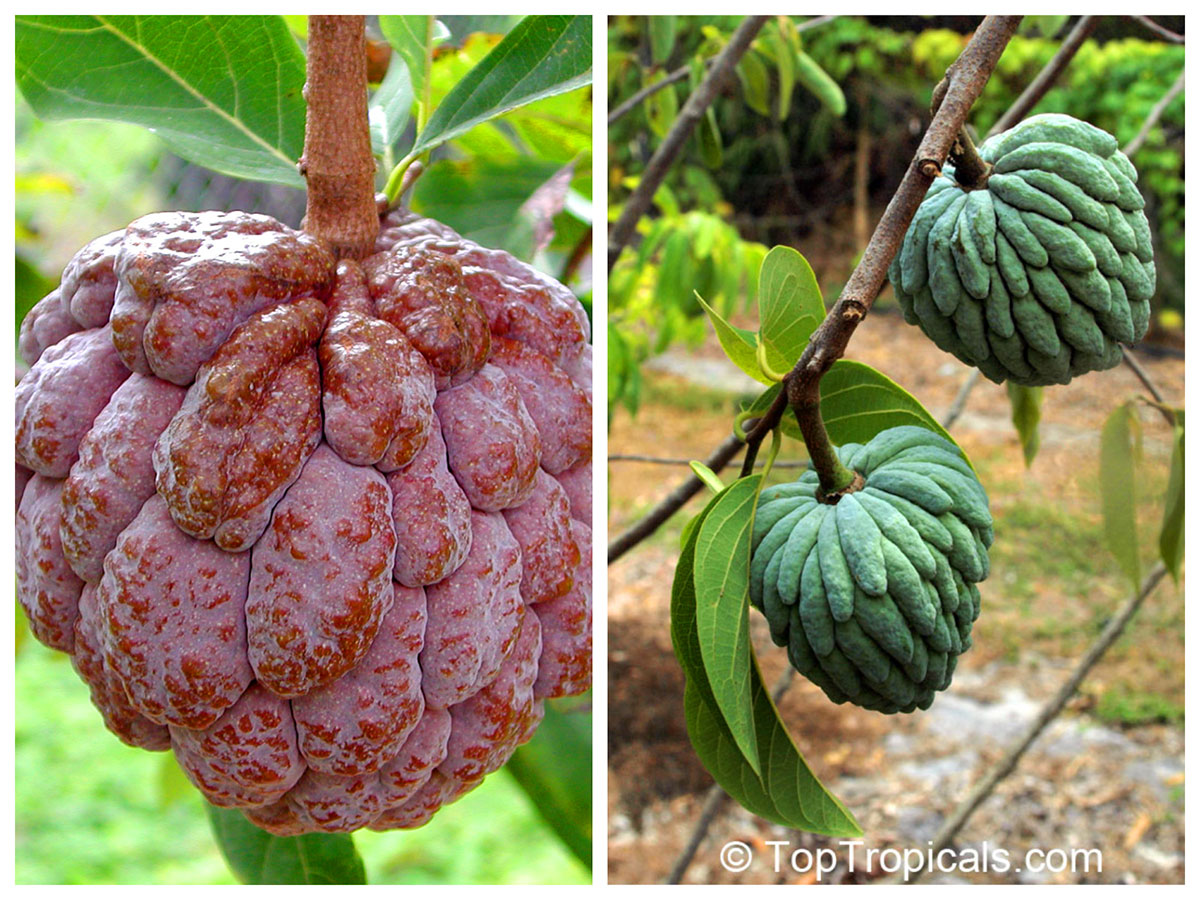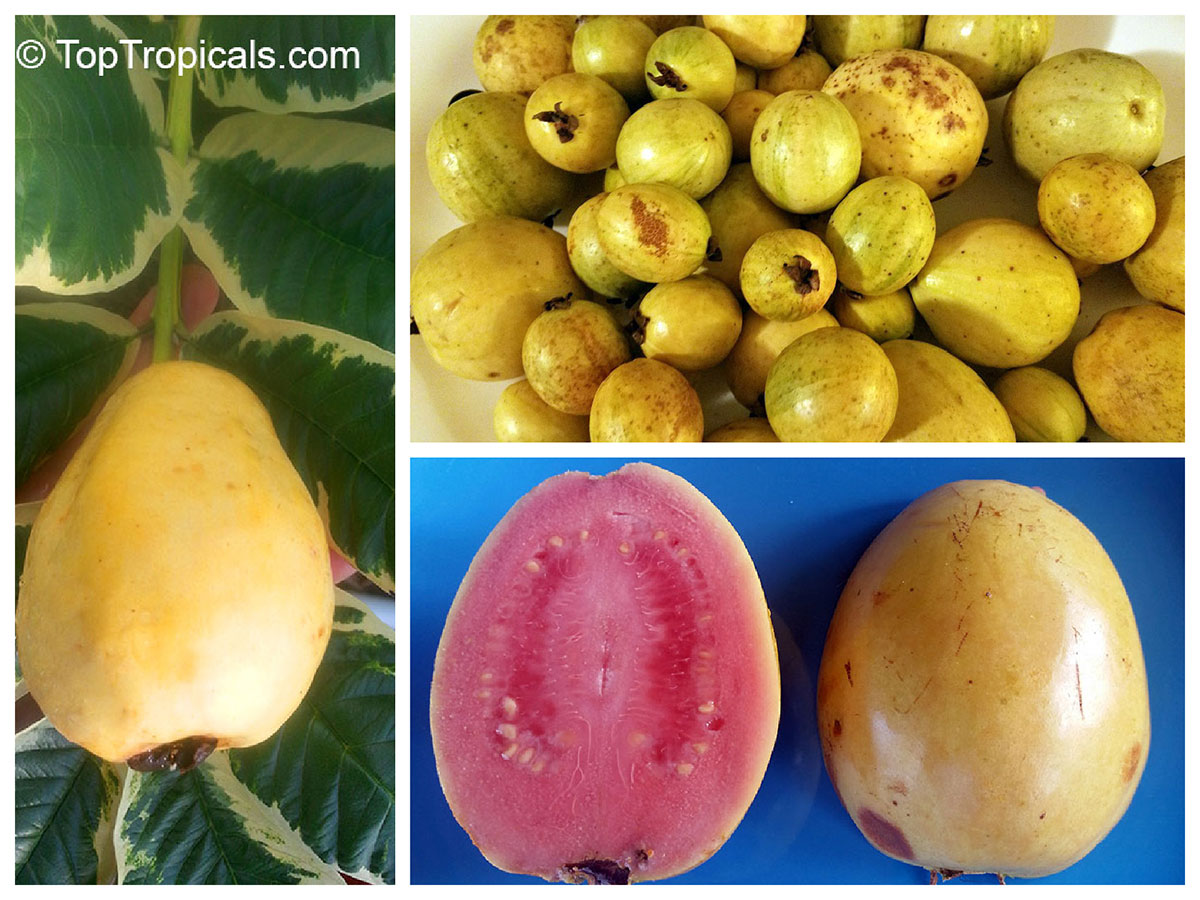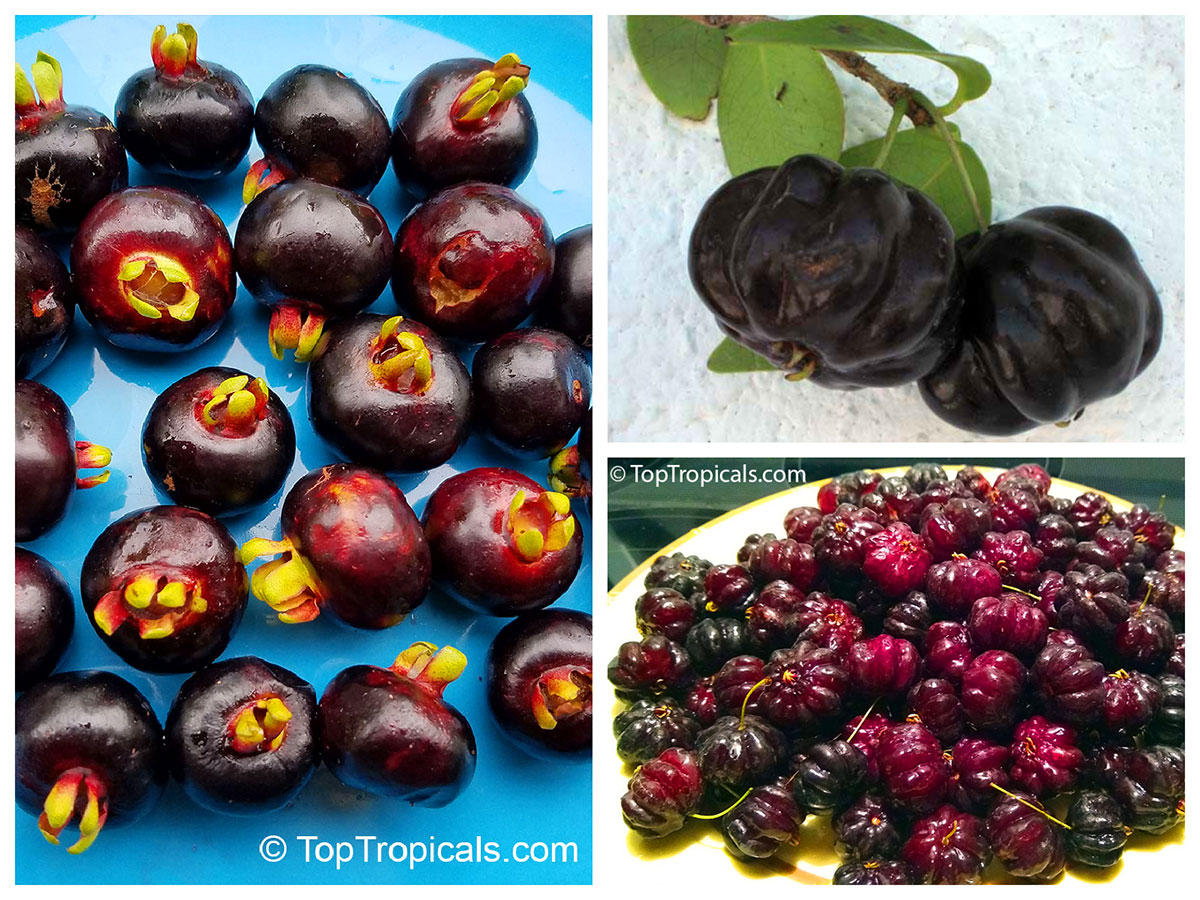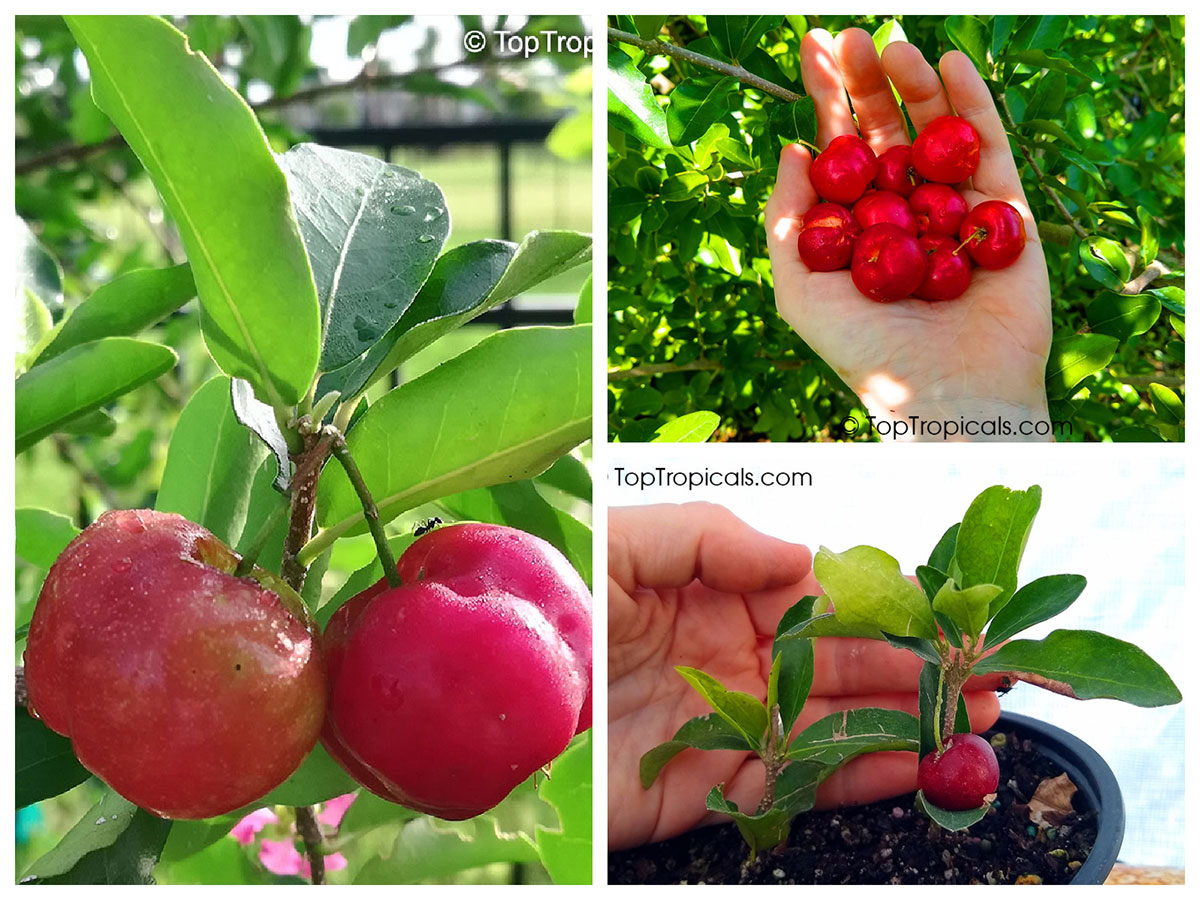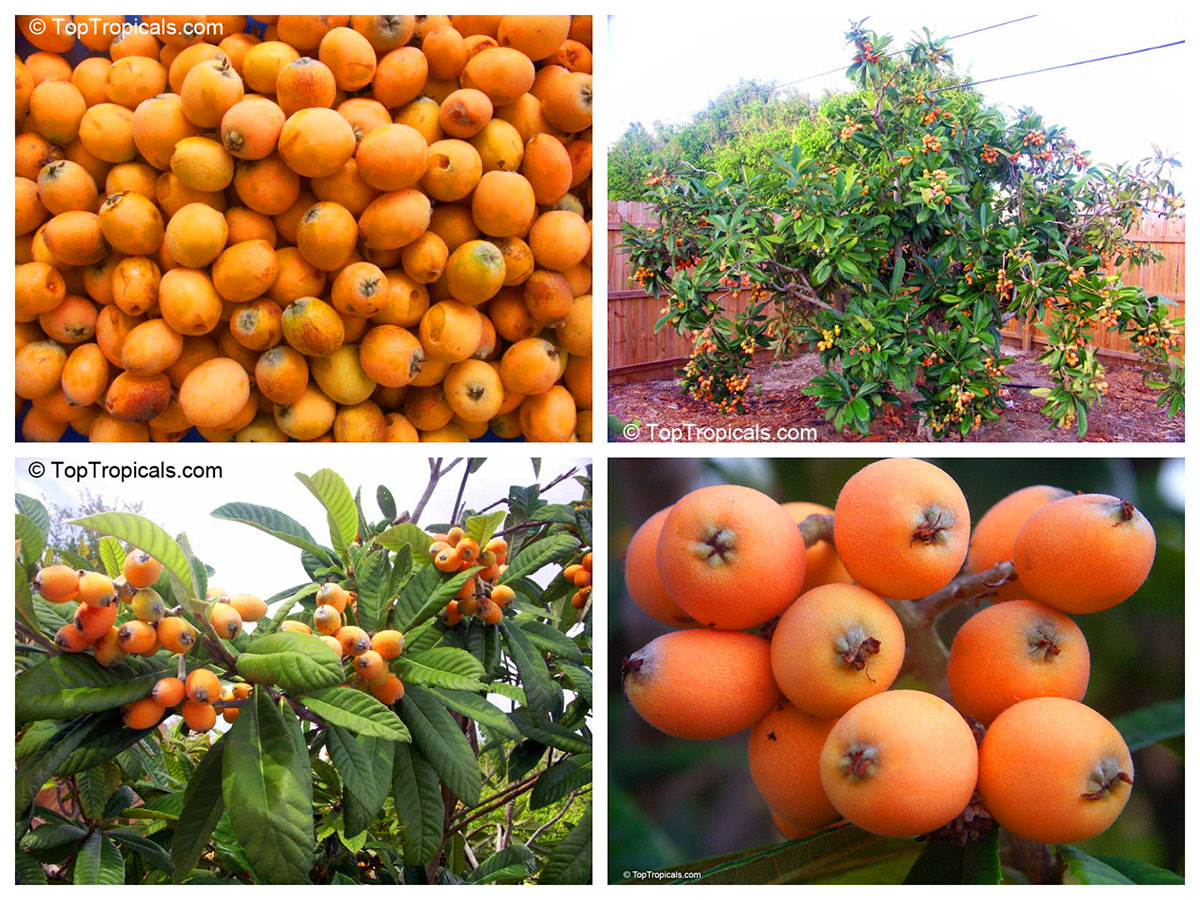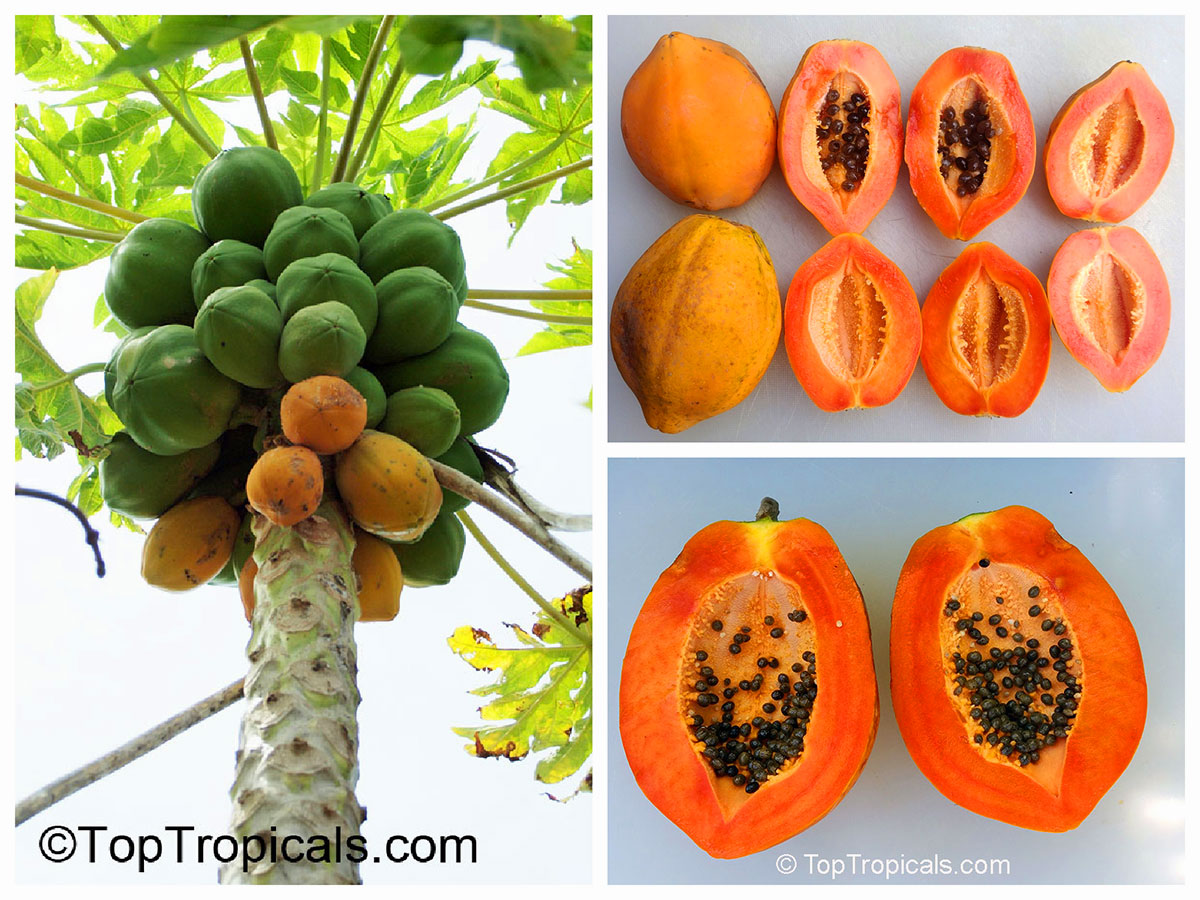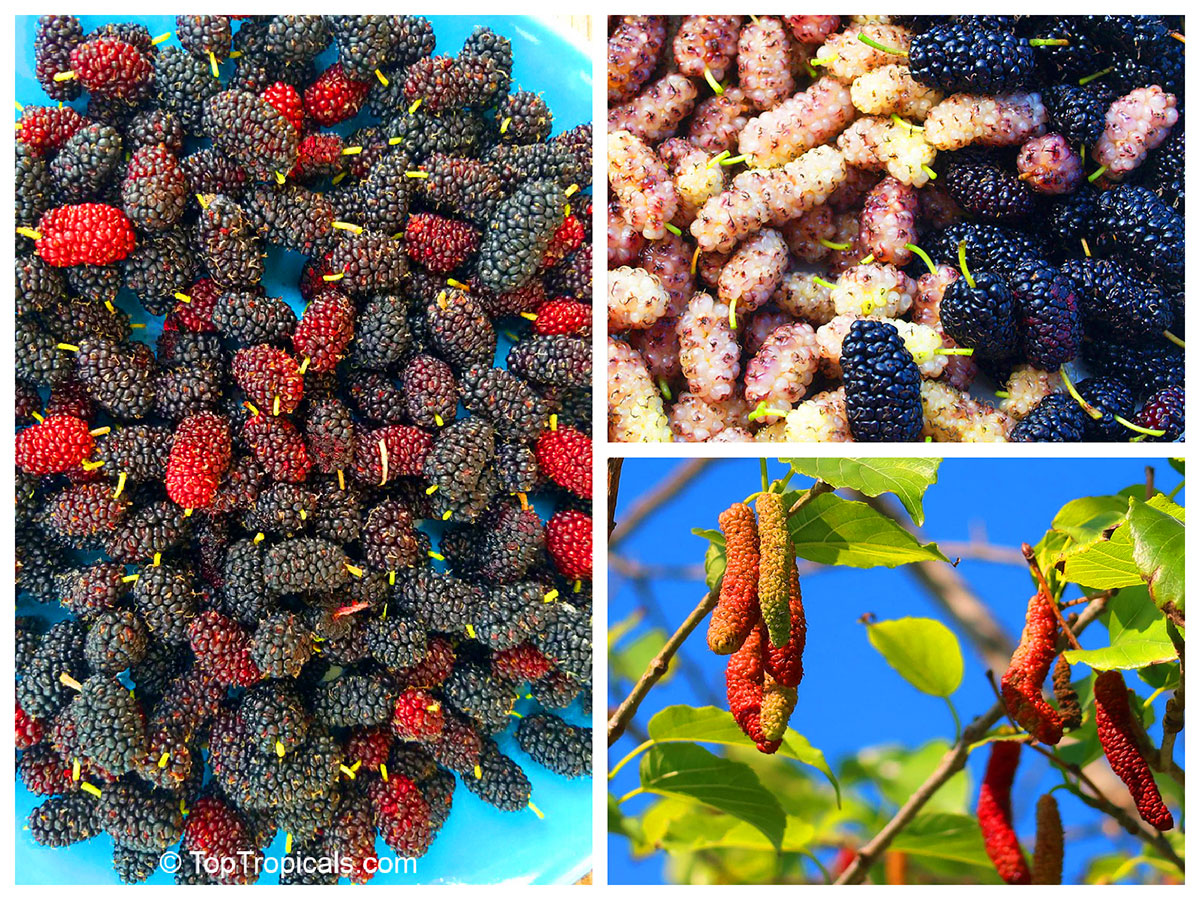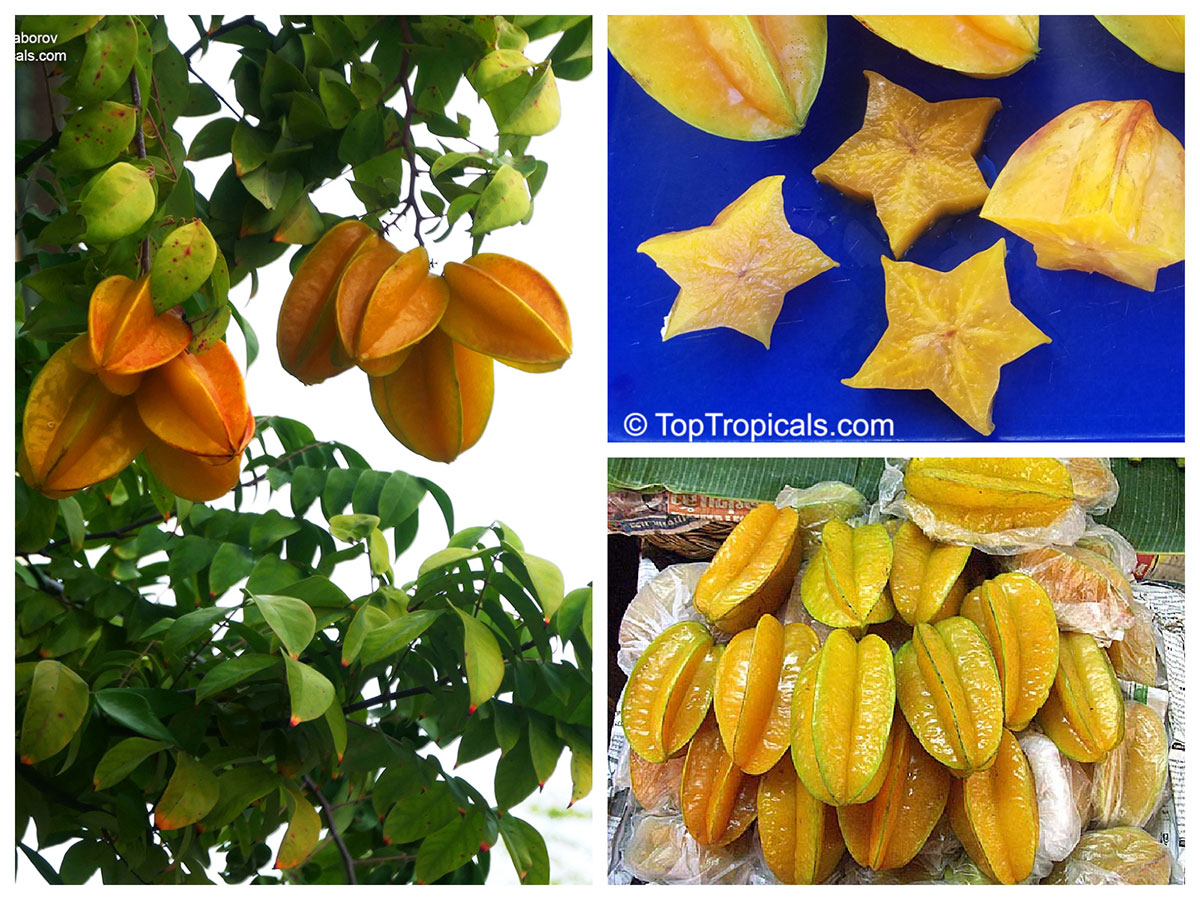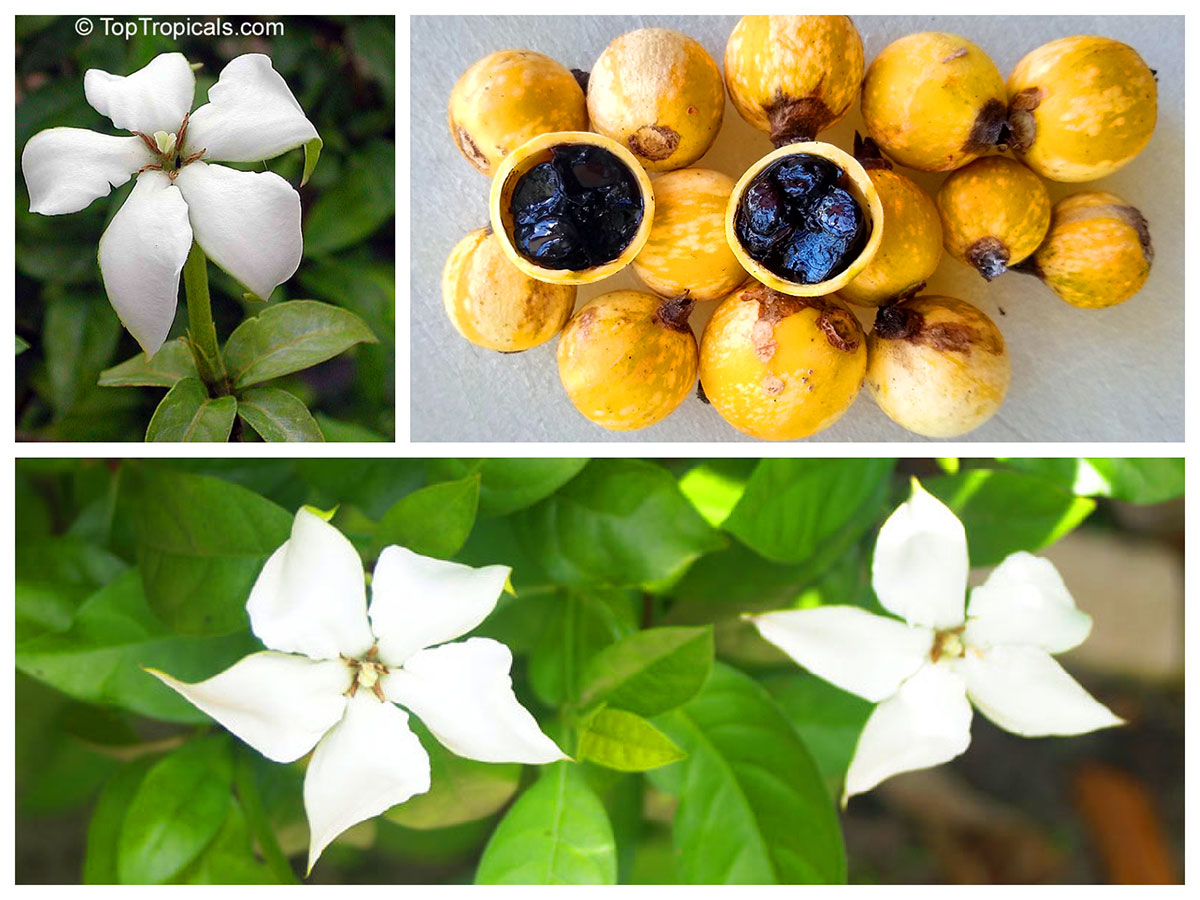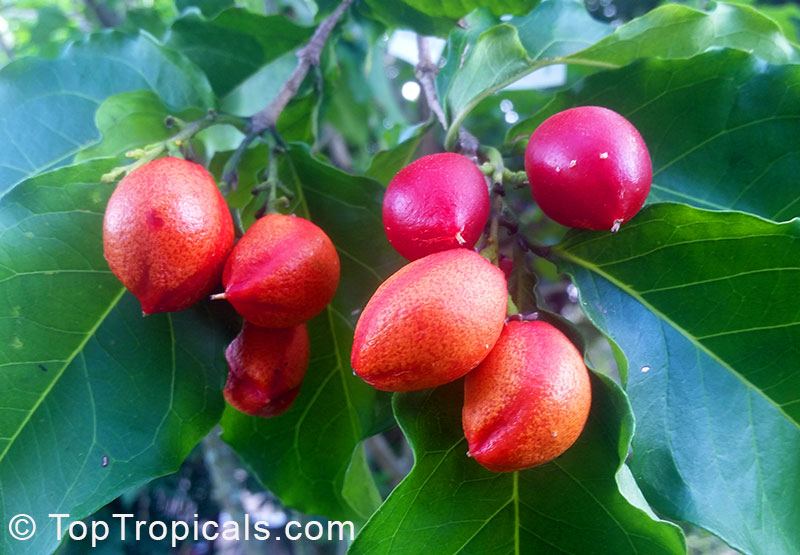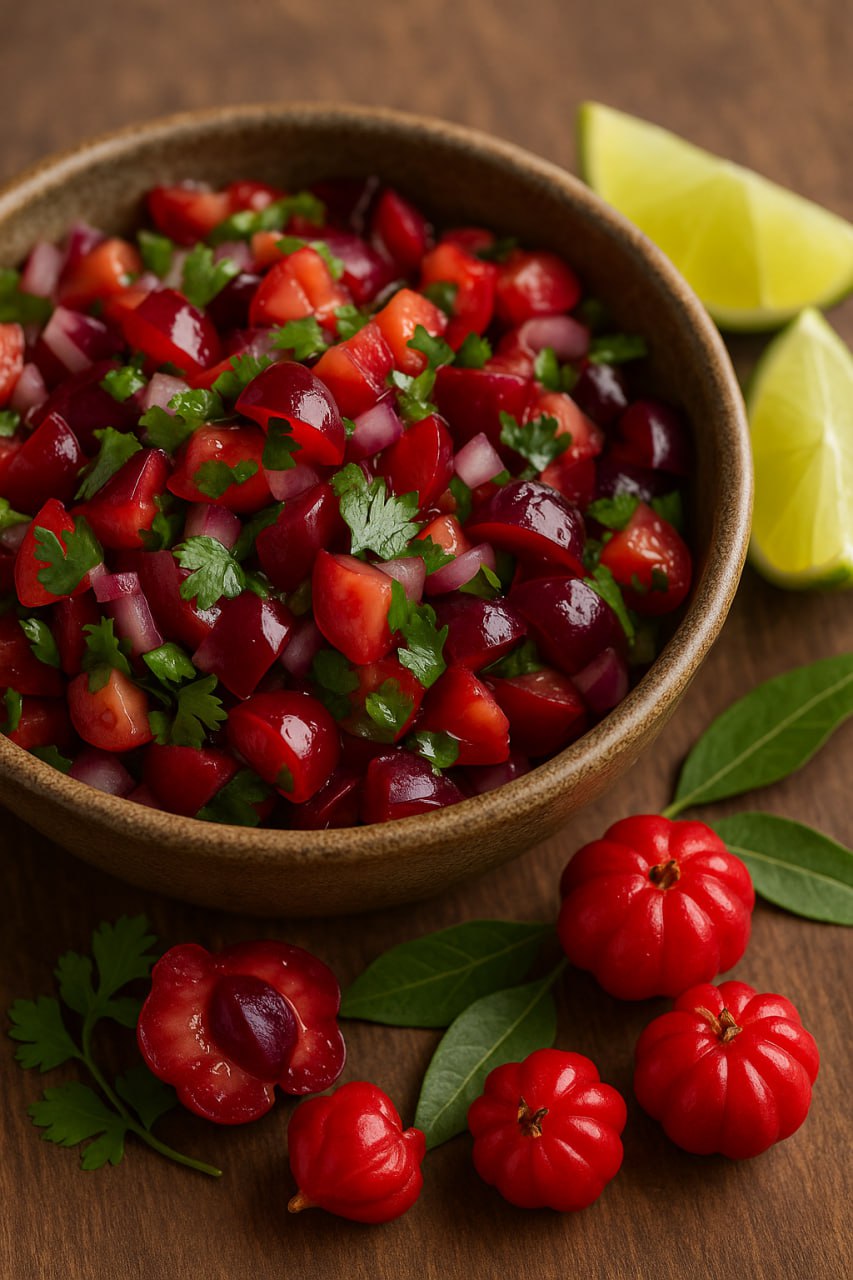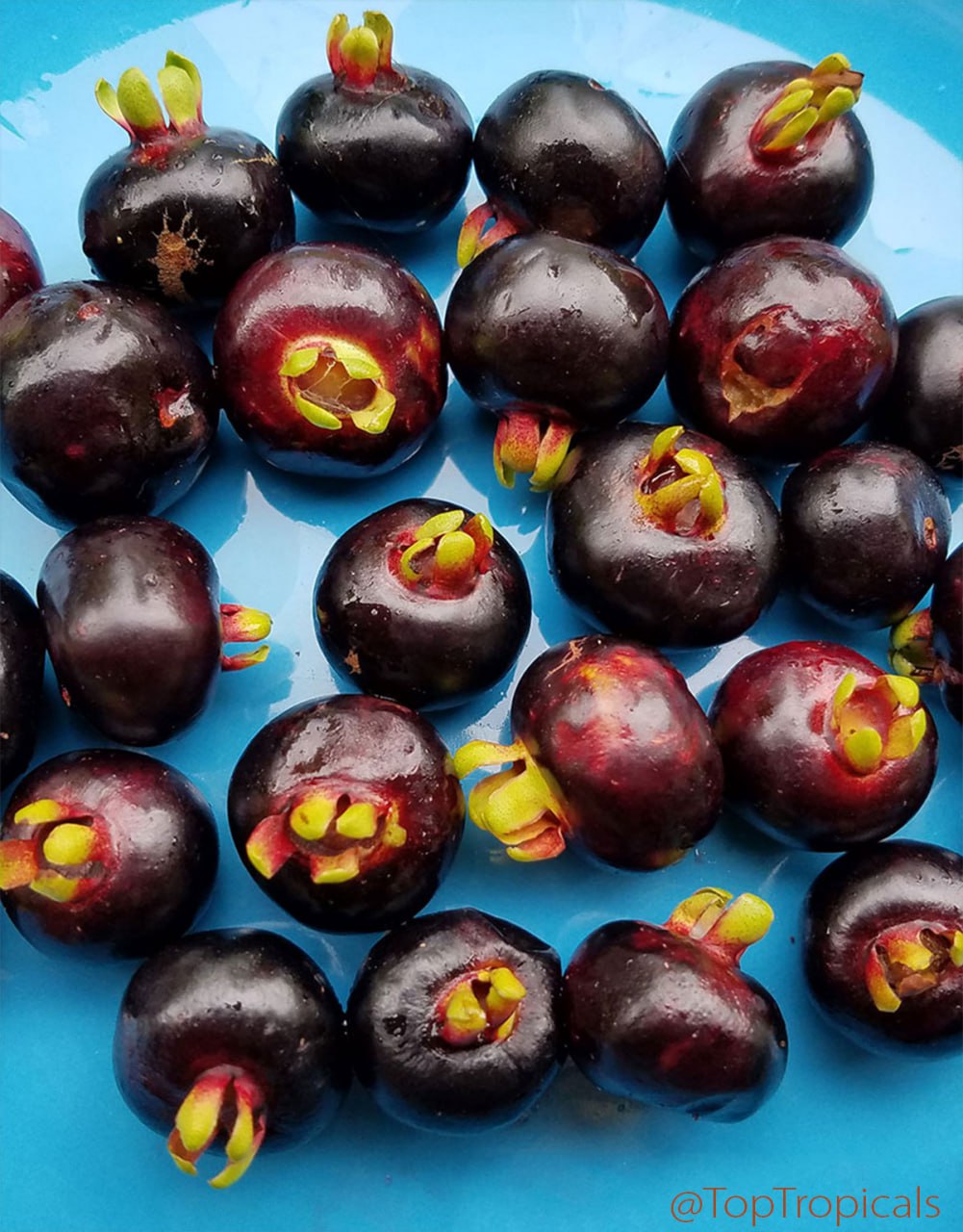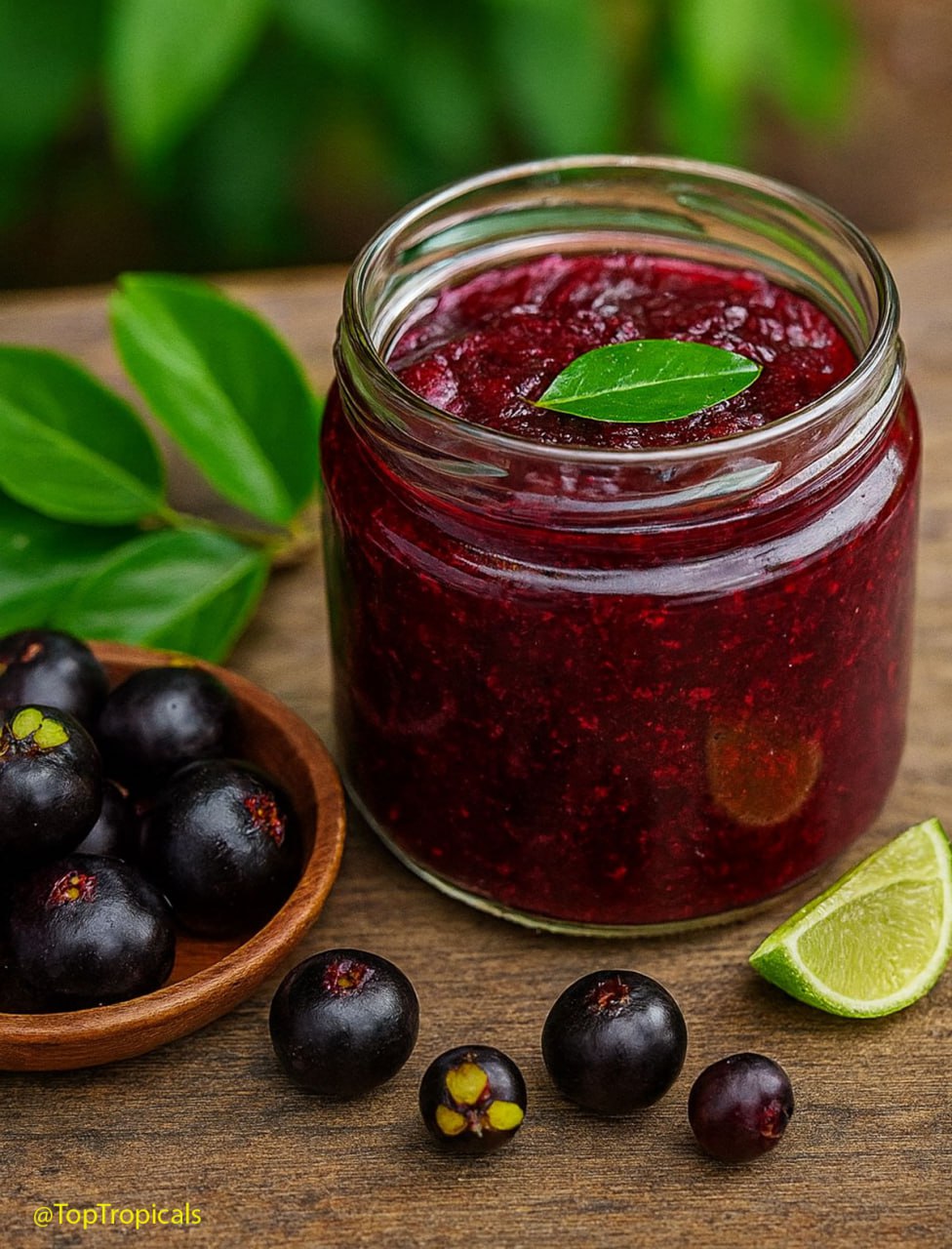Garden Blog - Top Tropicals
Date:
🍒 Tropical Cherries – Eugenias
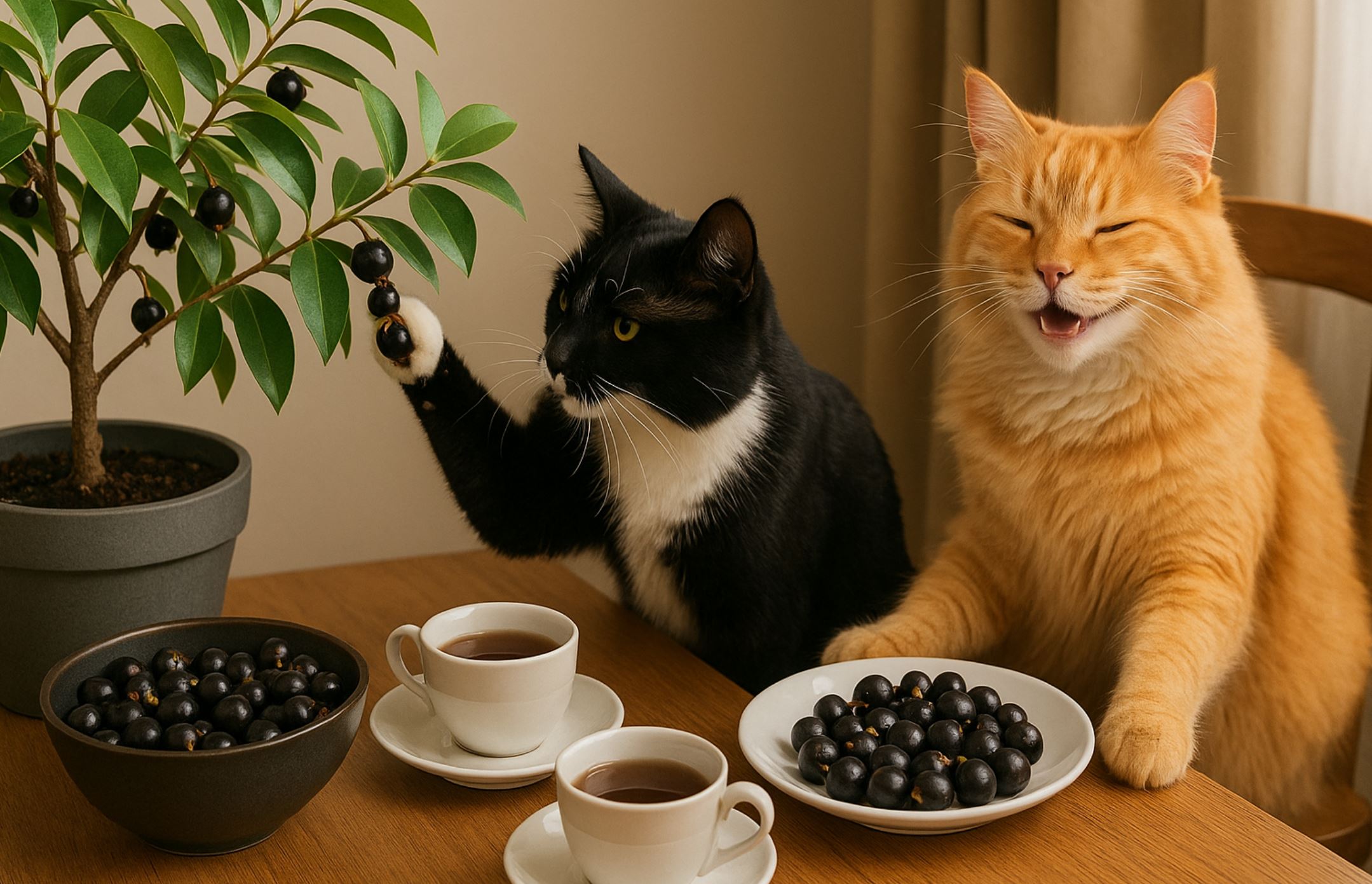
Tropical Tea Time with Grumichama
Eugenias have earned a spot in many Southern gardens because they’re easy, dependable, and surprisingly versatile. These small trees and shrubs grow well in the ground or in containers, and they don’t waste time before setting fruit.
15% Off Eugenias – Limited Time
Use code EUGENIA15 at checkout.
Excluding S/H. Offer expires 08/28/2025
👍 Popular Choices:
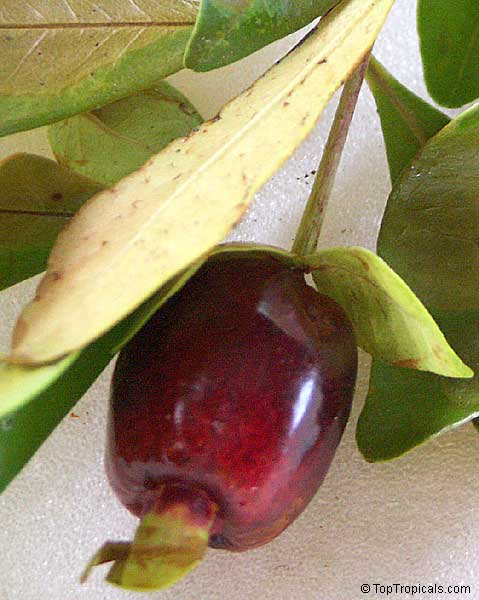 |
| 4148 Eugenia aggregata Fruit plant, Cherry of the Rio Grande |
Grown in 6"/1 gal pot
$49.95 Sale $39.95  |
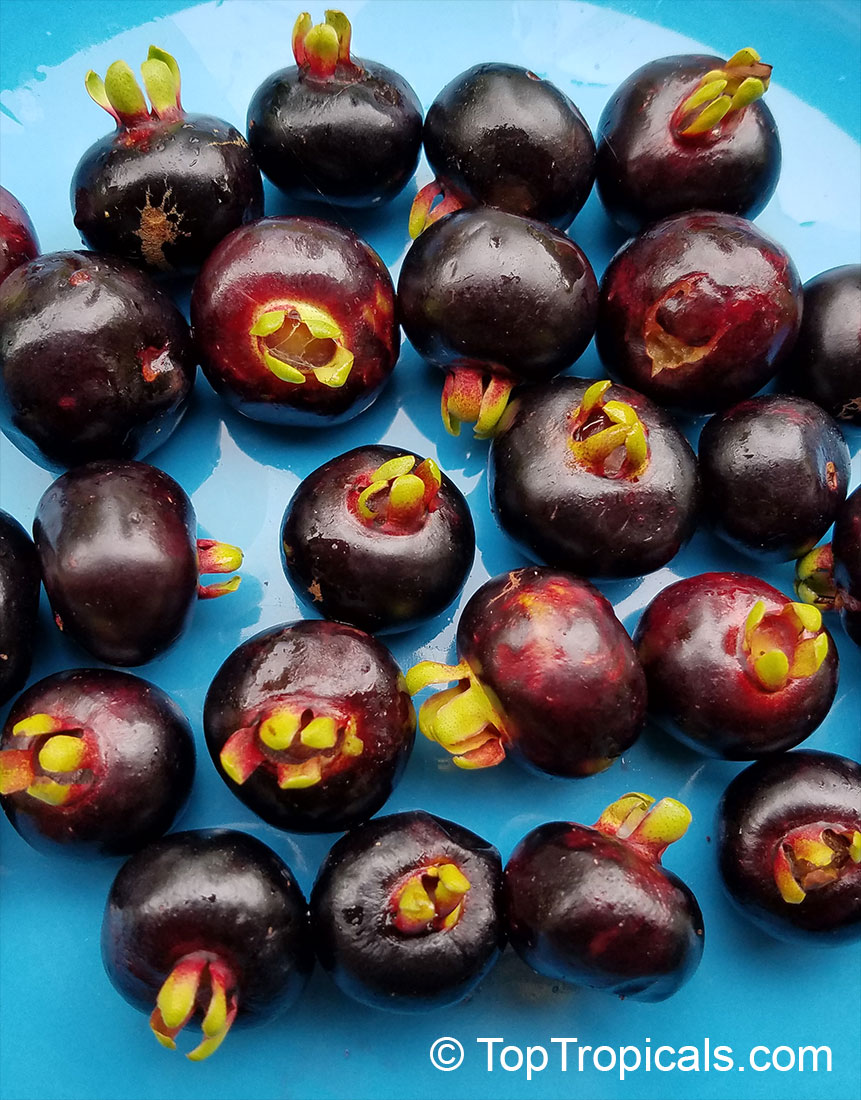 |
| 1079 Eugenia brasiliensis fruit tree - Grumichama |
Grown in
6"/1 gal or larger pot $39.95  |
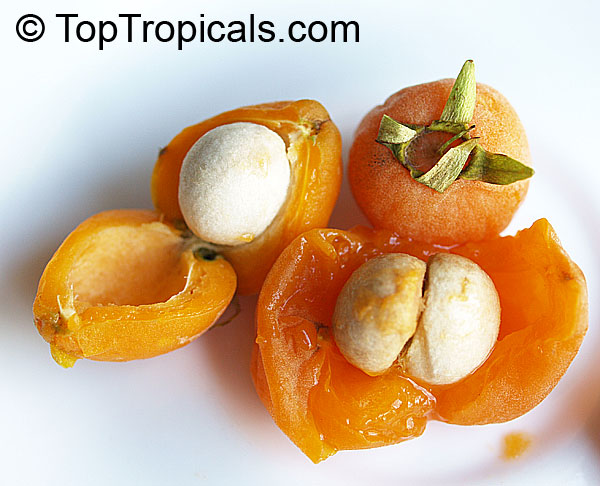 |
| 1080 Eugenia luschnathiana Fruit plant, Pitomba |
Grown in 10"/3 gal pot $49.95  |
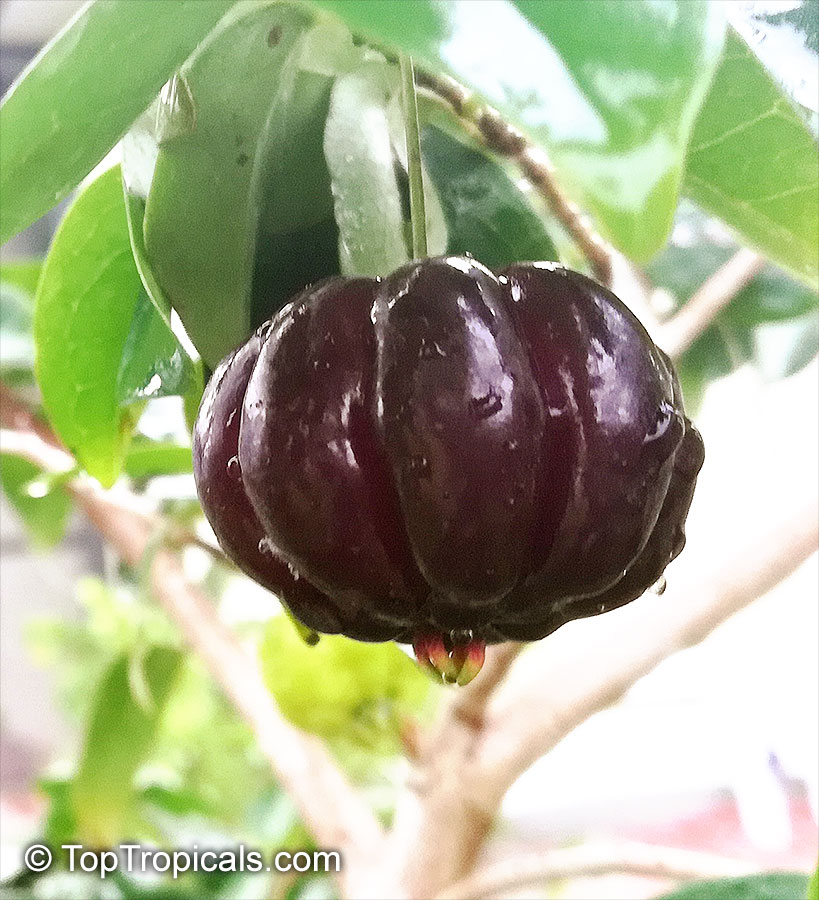
|
| 6063 Eugenia uniflora Fruit plant, Black Surinam Cherry Lolita |
Grown in 10"/3 gal pot $39.95  |
What Makes Eugenia Cherries Stand Out
- Start producing fruit in just a couple of years
- Compact size — easy to keep 6–12 ft tall, smaller in pots
- Low-care — tolerant of most soils and resistant to common pests
- Strong in hot weather, yet can handle a light frost down to the mid-20s °F
- Plenty of fruit for people and birds alike
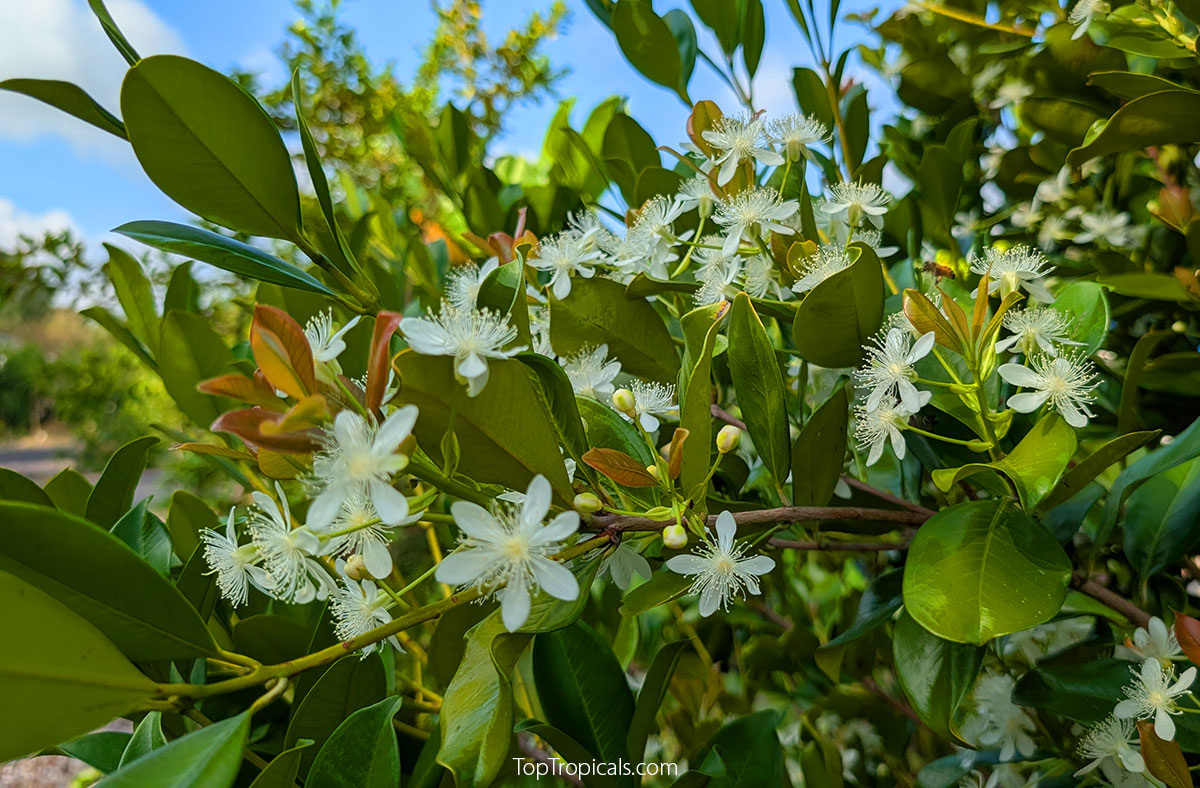 Grumichama Tree in Bloom – Eugenia brasiliensis
Grumichama Tree in Bloom – Eugenia brasiliensis
 Growing & Care
Growing & Care
Outdoors
- Best in USDA Zones 9–11
- Sun or partial shade; more sun usually means sweeter fruit
- Plant in well-drained soil; avoid heavy, wet spots
- Withstands summer heat and humidity, and can take a light freeze
Container / Indoor
- Do well in 5–10 gallon pots on patios or balconies
- Need bright light indoors — a sunny window or grow lights
- Can flower and fruit in containers if kept warm and well lit
- In cooler zones, bring plants indoors for winter and back out in spring
General Care
- Water: Keep soil evenly moist; drought-tolerant once established but best yields with regular watering
- Soil: Use good potting mix - LINK TO SOIL
- Fertilizer: Balanced slow-release LINKL TO FERTILIZER Sunshine Boosters
- Pruning: Light trimming keeps plants bushy and productive
- Pollination: Self-fertile; one plant will fruit on its own
Date:
Discover 10
best fruit trees to grow
in Florida and Southern landscapes
Q: We recently moved into our new home in Florida, and the property is a great size - 5 acres - but it currently has no trees, just a few palms. I'm looking to plant some productive fruit trees to start building our own Food Forest. What fruit trees would you recommend as a good starting point?
A: With five acres of space, you have a fantastic opportunity to create a fruitful garden that can provide for your family for many years to come. Below are our top recommendations for must-have, easy-to-grow fruit trees that thrive in Florida's climate, grow quickly, and start producing right away.
1. Mango Tree
Mango trees (Mangifera indica) are a must-have for any Florida garden, embodying the essence of the Sunshine State with their delicious and nutritious fruit packed with vitamins and fiber. These fast-growing, low-maintenance trees thrive with minimal water and are heat-tolerant. Grafted varieties produce high-quality, fiberless fruit in just 2-3 years, while dwarf "condo" mangoes are perfect for smaller spaces or containers. While young trees need frost protection, mature trees handle cold better. Grafted mangoes offer rich taste that you won't find in commercially grown, fibrous varieties, ensuring a sweet and vibrant harvest from your own garden.
2. Avocado Tree
The Avocado tree (Persea americana) is an essential addition to any tropical or subtropical garden. Known for its health benefits and superfood status, it's a favorite fruit that's not only productive but also a beautiful ornamental tree. Some avocado varieties are more cold-tolerant than mango trees, with the ability to survive temperatures below 25F. While many enjoy growing avocado from seed, only grafted trees guarantee quality fruit and immediate production, as seedlings can take 7-8 years to bear fruit. To successfully grow avocado, ensure good drainage by planting on a raised mound (4-6 inches) and keep the soil consistently moist. There are also compact varieties like Wurtz and Fuerte that thrive in containers or small spaces, making them ideal for patios and small gardens.
3. Tropical Cherries
Tropical cherries, such as Cherry of the Rio Grande (Eugenia aggregata), Grumichama (Eugenia brazilensis), Pitomba (Eugenia luschnathiana), and Black Surinam Cherry (Eugenia uniflora var. Lolita), are popular and easy-to-grow fruit trees that offer fast growth and excellent fruit production. These compact, versatile trees thrive in both the ground and containers, starting to produce fruit almost immediately. Eugenias are low-maintenance, requiring minimal water, thriving in various soil types, and being pest-free. They are heat-tolerant and can endure cool winters, surviving light frosts. Birds love the fruit, but don't worry - there will always be plenty for everyone.
4. Barbados Cherry Tree
Barbados Cherry (Malpighia glabra), also known as Acerola, is a tropical cherry renowned for having the highest vitamin C content of any fruit. This nutrient-packed fruit is perfect for jellies, jams, and freezing without losing its vitamin C. The Barbados Cherry is a fast-growing, dense shrub that fruits multiple times a year, providing abundant harvests for gardeners seeking quick results. It thrives in alkaline soil, tolerates drought, and is relatively cold-hardy, withstanding light freezes. Birds love the fruit, making it a great addition to wildlife-friendly gardens. The dwarf variety, Nana, with its small leaves and fruit, is perfect for containers, borders, or even bonsai, adding ornamental value to any space.
5. Noni Tree
The Noni Tree (Morinda citrifolia) is a top superfood plant that makes a fantastic addition to any Southern garden. Known for its numerous medicinal benefits, Noni fruit offers anti-inflammatory properties, relief from arthritis, and support for conditions like diabetes, metabolism, and weight loss. It's even believed to help fight cancer. Noni trees grow quickly and begin producing fruit within 2 years from seed. This tough, resilient plant thrives in poor soil, endures summer heat, and withstands drought conditions. Despite its tropical appearance, Noni is surprisingly cold-hardy, recovering well after leaf damage in cooler weather. In addition to its health benefits, the Noni tree has ornamental value, with large, waxy leaves and unique fruit, where the flower appears to grow directly on the fruit!
6. Macadamia Nut Tree
The Macadamia Nut Tree (Macadamia integrifolia) is a fantastic addition to any garden, allowing you to grow these delicious, high price tag, nutrient-rich nuts right at home. These trees are cold-hardy, grow quickly, and thrive in all Florida soil types. Once established, they are productive and can tolerate both flooding and drought. Older trees can survive colder winters, while young trees need protection from temperatures below 25-26F. Macadamia trees like plenty of water and a special fertilizer program, including liquid fertilizers and microelements, to ensure healthy root development and optimal production. Aside from being rich in healthy fats, vitamins, and minerals, macadamia nuts offer numerous health benefits, such as improved digestion, heart health, weight management, and blood sugar control. They are also packed with tocotrienols - antioxidants which may protect against cancer and brain diseases.
7. Papaya Tree
Papaya trees (Carica papaya) are resilient, easy to grow, and produce fruit year-round. Rich in papain, a digestive enzyme, papayas are a superfood that promotes gut health. These fast-growing trees often begin producing fruit within the same year they're planted, providing quick rewards for gardeners. Many varieties, especially dwarf papayas, are space-efficient, reaching only 6-8 feet tall while still yielding large crops, making them perfect for small gardens. Surprisingly hardy for a tropical plant, papayas can withstand light freezes and strong winds (tested in hurricanes!). While they are self-fertile, planting 2-3 different cultivars improves pollination and increases yields. "Solo" cultivars, with their smaller, round or oval fruits, are sweet and less susceptible to fruit flies.
8. Guava Tree
Guava trees are beloved for their flavorful fruit, commonly used in juices, drinks, and desserts. Popular varieties include Tropical Guava (Psidium guajava), Cattley Guava (Psidium littorale), Cas Guava (Psidium friedrichsthalianum), and Pineapple Guava (Feijoa sellowiana). Despite their tropical nature, guavas are surprisingly cold-hardy, suitable for cooler climates and occasional frost. These trees thrive in moist conditions and can tolerate some flooding, while their compact growth makes them easy to maintain at any height or shape. Guavas are fast-fruiting, often producing fruit within a year of planting, and even some varieties in 1 gal containers. The dwarf Nana variety is perfect for container culture, producing full-sized fruit in a compact form. Guava trees are mostly pest-resistant, though mealybugs may require occasional treatment with neem oil in humid, rainy areas. Planting multiple guava trees ensures a continuous supply of fresh, juicy fruit and delicious guava juice for everyone to enjoy.
9. Jackfruit Tree
The Jackfruit tree (Artocarpus heterophyllus) is a striking, fast-growing tree known for producing the largest fruit grown on a tree, making it a showstopper in any garden. Nutrient-packed and often used as a meat substitute in South Asian cuisine, Jackfruit is also delicious in curries, chutneys, and as dehydrated chips. These trees grow quickly, have large waxy leaves, and can be maintained at a compact height of 7-8 feet, making them ideal for smaller spaces and easier cold protection. Despite being a tropical species, Jackfruit trees are relatively cold-tolerant and can survive light frost (although on the account of production volume), with established trees being more hardy than seedlings. Jackfruit trees begin producing fruit within 3-4 years from seed, and varieties come true to seed, eliminating the need for grafting, though it can be done for specific varieties.
10. Loquat Tree
The Loquat tree (Eriobotrya japonica) is a fast-growing, drought-tolerant, and highly cold-hardy tropical fruit tree that thrives in Florida gardens. Loquats are heavy producers, with juicy, aromatic fruit that ripens from early spring to early summer, offering a delicious apricot-like flavor. This compact tree is perfect for small gardens, beginners, and those with limited space. Loquats are undemanding, thriving in any soil and withstanding summer heat, winter cold, heavy rains, and occasional flooding. Nutrient-rich, they are high in sugar, acids, vitamins B and C, minerals, and pectin. Loquats are versatile, enjoyed fresh or used in fruit salads, jams, jellies, chutneys, pies, sauces, and even wine-making, and they are often used as a natural sweetener.
Ten best fruit trees to grow in Florida and Southern landscapes
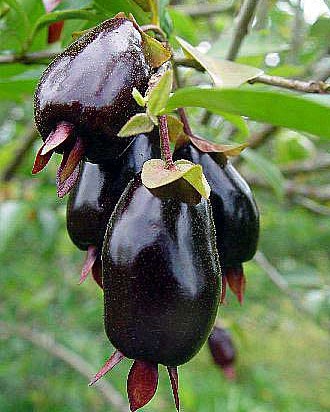
Cherry of the Rio Grande (Eugenia aggregata)
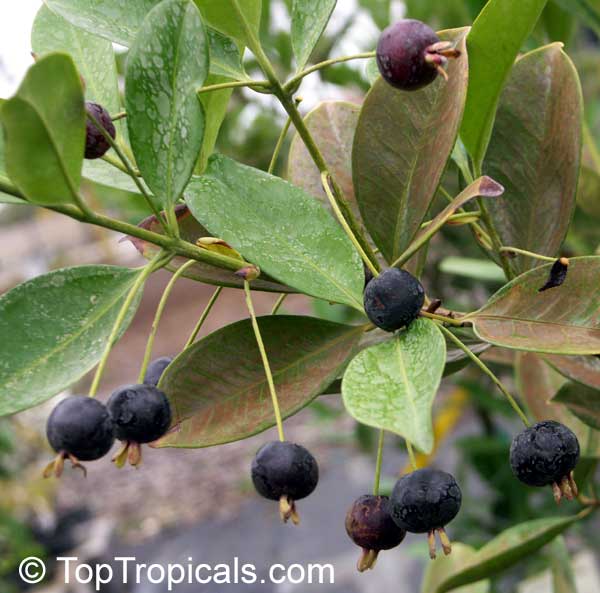
Grumichama (Eugenia brazilensis)
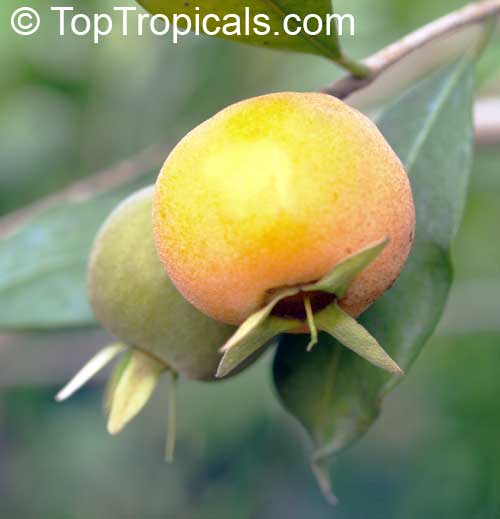
Pitomba (Eugenia luschnathiana)
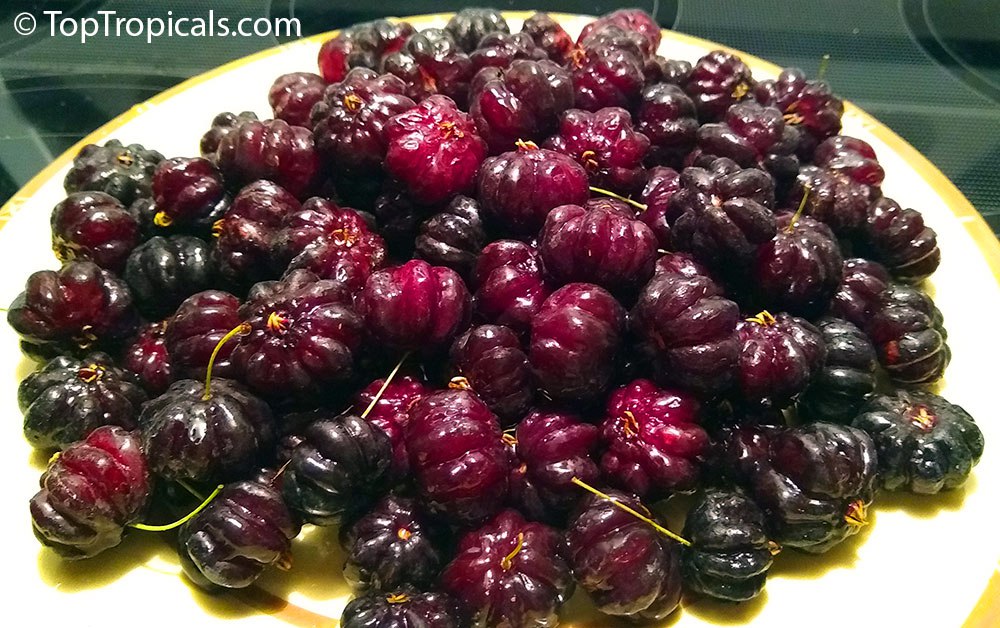
Black Surinam Cherry (Eugenia uniflora var. Lolita)
# 3: Tropical Cherries: Eugenias.
- 🍒 The most popular and easy-to-grow tropical cherries include Cherry of the Rio Grande (Eugenia aggregata), Grumichama (Eugenia brazilensis), Pitomba (Eugenia luschnathiana), and Black Surinam Cherry (Eugenia uniflora var. Lolita). They are all-time favorites!
- 🍒 Growth and Versatility: Eugenias are fast-growing, compact, and versatile, thriving both in the ground and in containers.
- 🍒 Early Fruit Production: These bushy shrubs or small trees begin producing fruit right away.
- 🍒 Low Maintenance: They're not particular about soil, need minimal water, are pest-free, and thrive in both full sun and partial shade. Eugenias are highly heat-tolerant and can withstand cool winters, even surviving a light freeze.
- 🍒 Fruit for All: Birds love the fruit, but don't worry - there will be plenty to go around.
📚 Learn more from previous posts:
🛒 Shop Eugenias - Tropical Cherries
#Food_Forest
🔴 Join 👉 TopTropicals
Why you should grow a Pitanga tree
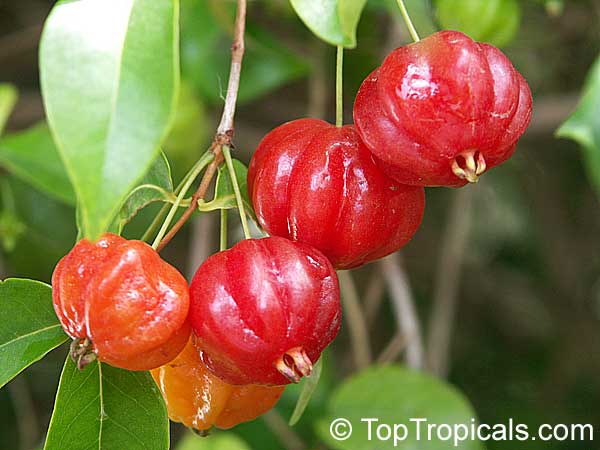
Eugenia uniflora - Surinam cherry, Brazilian cherry, Pitanga tree - fruit
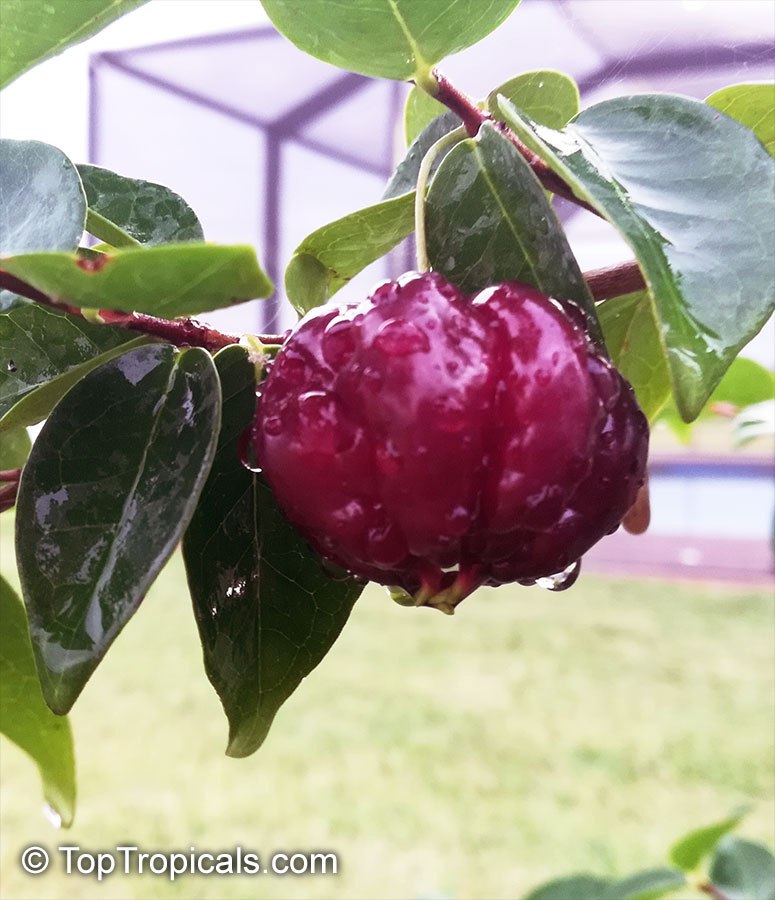
Eugenia uniflora - Surinam cherry, Brazilian cherry, Pitanga tree - fruit var. Lolita
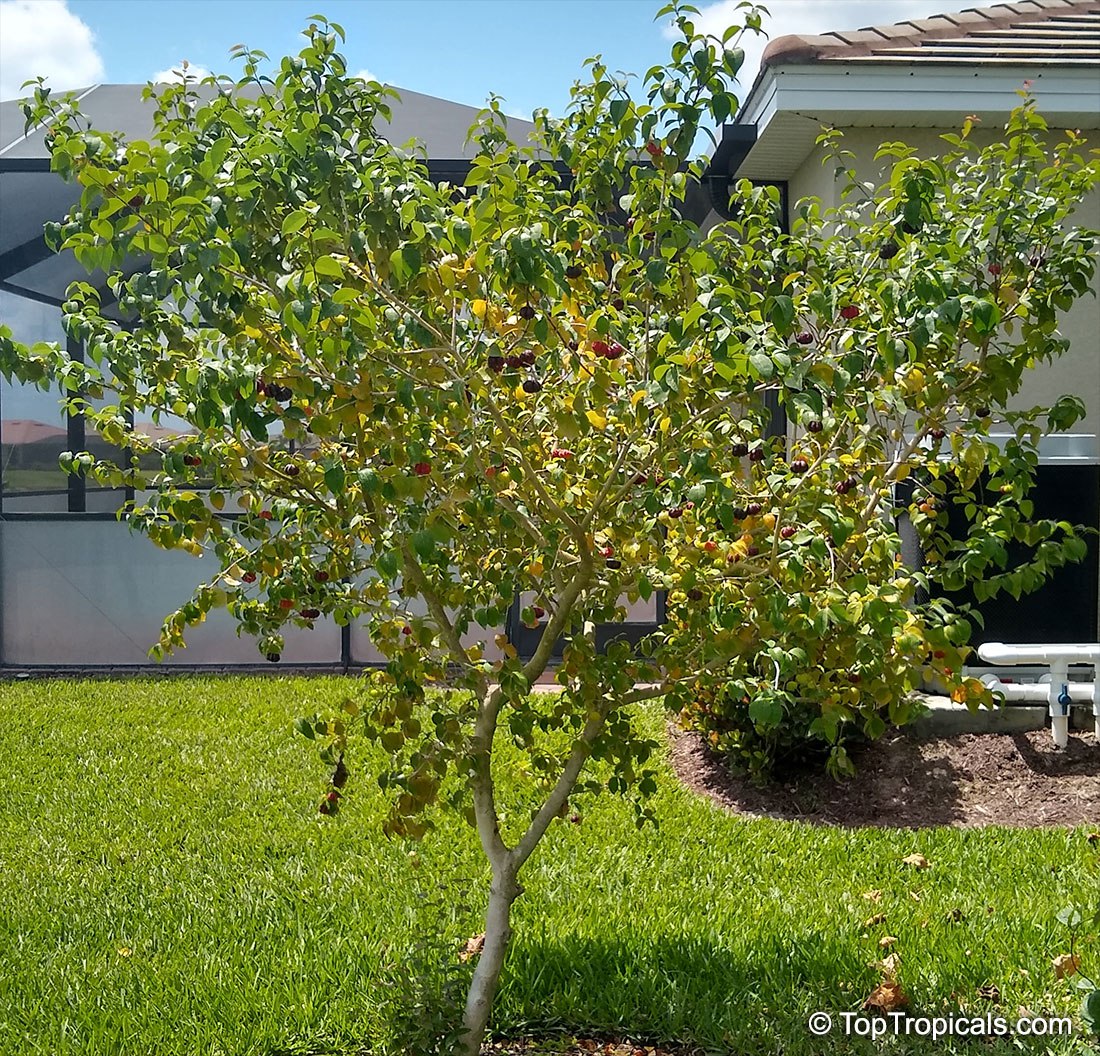
Eugenia uniflora - Surinam cherry, Brazilian cherry, Pitanga tree
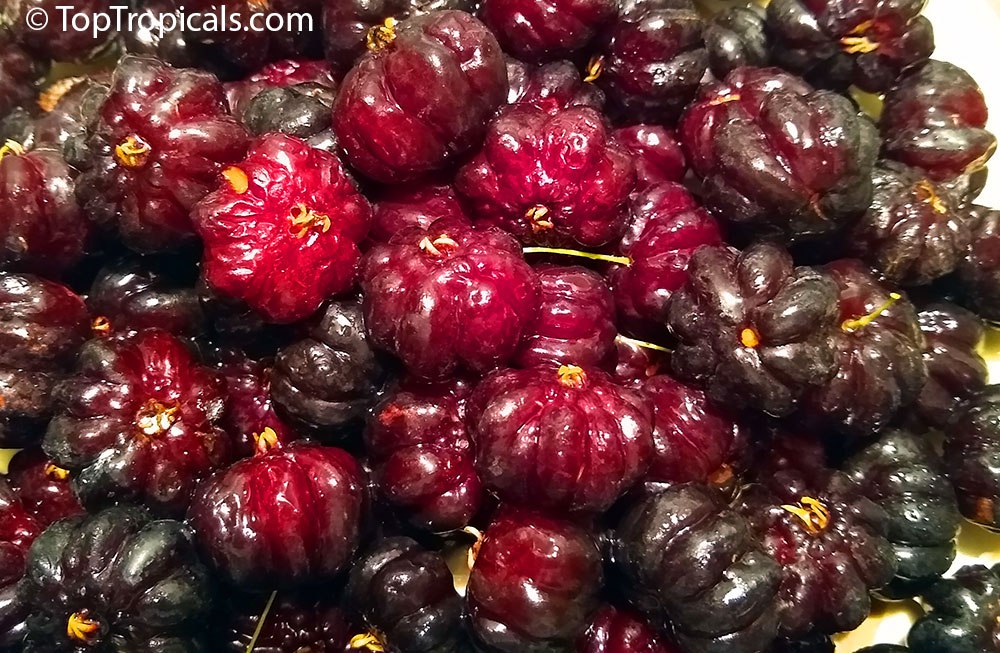
Eugenia uniflora - Surinam cherry, Brazilian cherry, Pitanga tree - fruit var. Lolita
Pitanga (Eugenia uniflora), also known as Surinam cherry or Brazilian cherry, is a tropical fruit that's as tasty as it is healthy. This small tree or bush brings beauty to your yard and benefits to your body. With shiny leaves, fragrant white flowers, and bright red or dark maroon fruit, it's an easy-to-grow plant that also happens to be a nutritional powerhouse.
❓ So, why plant Pitanga?
- 🍒 Pitanga is packed with vitamins. Pitanga is loaded with vitamin C for glowing skin and a strong immune system, and vitamin A for healthy eyes.
- 🍒 Pitanga is full of antioxidants. Especially the dark fruits, which are rich in plant compounds like lycopene and beta-carotene that may protect your cells and reduce inflammation.
- 🍒 Pitanga has healing power. Traditional medicine has used it for heartburn, stomach issues, and even respiratory conditions. Lab studies show it may help fight bacteria and fungi too.
- 🍒 Pitanga might fight cancer. Early research suggests pitanga extracts may slow cancer cell growth.
- 🍒 Pitanga tastes like summer. When fully ripe, the juicy fruit has a sweet-tart flavor - great in salads, desserts, jams, and even cocktails. Pitanga var. Black Star, or Lolita has exceptional flavor, larger sweeter fruit than regular red-fruit variety.
⚠️ Bonus: It grows fast, stays evergreen, and makes a great natural privacy screen or edible hedge.
If you're looking for a tropical fruit tree that’s both beautiful and beneficial, Pitanga is a smart choice. Just make sure to pick the fruit when fully ripe - and prepare to fall in love with this cherry that's not quite a cherry!
🛒 Start growing Health today - add Pitanga to your Food Forest
📚 More about Lolita Cherry from previous posts:
- 💋What makes Lolita different from regular Surinam Cherry?
- 💋Top 10 fruit you'll ever need for your health benefits: #8 Lolita Cherry
- 💋 Who is that Sweet Black Lolita from Surinam?
- 💋Top 10 fast-fruiting trees: #3. Eugenias - Tropical Cherries
- 💋How to make a jam with Surinam Cherry
#Food_Forest #Remedies #Hedges_with_benefits #Discover
🔴 Join 👉 TopTropicals
Date:
Top ten fast-fruiting trees
Q: I would like to plant several fruit trees... I am 85 years old and hope to see them fruiting soon. What fruit trees can you recommend that will fruit quickly?
A: Most grafted fruit trees, such as Mango, Avocado, and Peaches, will fruit quickly - often within the same year or the next. There are also many wonderful tropical fruits that will produce for you within a year or two, even without the need for grafting. Below are the top 10 of most popular, most rewarding and easy to grow fast fruiting tropical trees:
1. Annona - Sugar Apple, Custard Apple.
Annonas are the fastest fruiting trees: 2-3-4 years from seed to fruit, depending on species. They are the best tropical fruit trees suited for container growing, due to their small height and can be maintained within 6-8 ft tall.
2. Guava (Psidium sp.): Cattley and Tropical guava
Guava is a reliable producer, starts fruiting in a pot at small size. Some varieties, especially Cattley guavas - Psidium littorale - are relatively cold hardy and can take some frost without damage. Guavas are fast growing small trees or large bushes.
3. Eugenia - Tropical Cherries
Eugenias are favorites of Southern gardens. They are relatively cold hardy and start producing right away. Black Surinam Cherry Lolita and Grumichama are our favorites!
4. Barbados Cherry (Malpighia glabra)
Another exceptional tropical cherry is Barbados Cherry. It is super popular as a heavy producer. The plant can start fruiting when it's only a few inches tall! If you are looking for a compact, but fast growing tree with colorful fruit that starts fruiting right away - plant Barbados Cherry. It will also happily fruit in containers.
5. Eriobotrya (Eriobotrya japonica)
Loquat tree is fast-growing, drought-tolerant, cold-tolerant, compact tropical fruit tree. It is a heavy producer. Fruits are juicy, aromatic, and resemble apricots. Ripen from early Spring to early Summer. Ideal for small gardens, beginner fruit tree growers.
6. Papaya (Carica papaya)
Papaya is probably the fastest fruiting tree that can start production the same year from planting a seed. Many dwarf varieties available in selection, reaching only 6-8 ft tall, but producing large crops of full size fruit - they are easy to harvest. Plant 2-3 Papaya trees of different cultivars that fruit at different times of the year and enjoy heavy crops of healthy fruit year around! Another benefit - this tree doesn't take much space in the garden, you can plant as many as you want.
7. Mulberry (Morus hybrids)
Mulberry is very cold hardy and can grow in wide range of climate zones, from USDA 5 to 10. Everyone knows this sweet, tasty, juicy fruit. The tree will produce right away, you will see fruit the next season after planting, and the tree grows fast.
8. Carambola - Starfruit (Averrhoa carambola)
Growing Carambola tree is a fun and rewarding way to enjoy this unique star-shaped delicious fruit right at home. It fruits on the 3d year from seed. The tree is easy to grow and reliable producer, providing wind protection.
9. Blackberry Jam Fruit (Randia formosa)
Blackberry Jam Fruit, Jasmin de Rosa is a curious small evergreen tree or bush that combines features of a fragrant flower and delicious dessert fruit which tastes like fresh Blackberry jam. Fragrant white flowers are similar to Gardenia.
10. Peanut Butter Tree (Bunchosia argentea)
Peanut Butter Tree, earns its name from its fleshy fruits that boast a delightful peanut butter flavor. Compact in size, small tree reaching only 10-15 ft or kept as a bush, it's a perfect choice for limited spaces. Can thrive indoors, starting to fruit within just 2-3 years from seed.
Why grow Grumichama? Benefits of Brazilian Eugenia Tree - Cherry of the Tropics
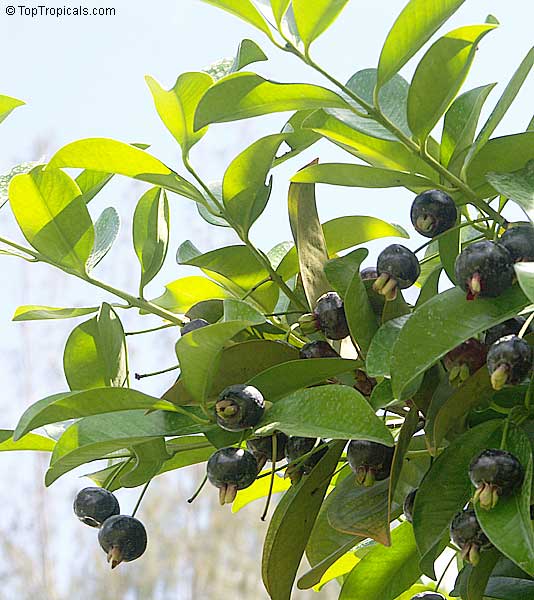
Grumichama (Eugenia brasiliensis), Brazilian Cherry, fruit
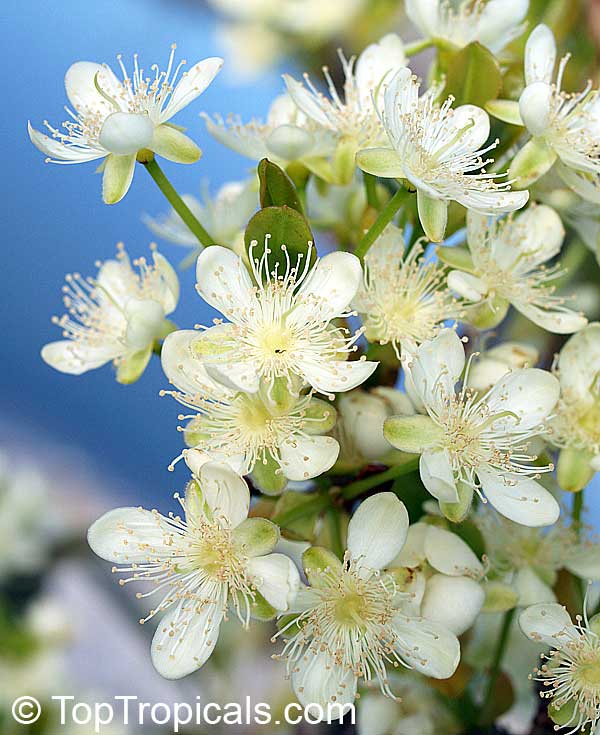
Grumichama (Eugenia brasiliensis), Brazilian Cherry, flowers
- 🍒 Did you know you can grow a tropical cherry right in your backyard? Grumichama (Eugenia brasiliensis), also known as the Brazilian Cherry, is a compact, evergreen fruit tree that's as beautiful as it is delicious.
- 🍒 With glossy green leaves and reddish new growth, it’s an ornamental gem. In spring, it produces white flowers that quickly turn into dark purple, cherry-like fruits - ready to harvest just four weeks after flowering!
- 🍒 The fruits have soft, melting flesh with a flavor similar to northern cherries. Enjoy them fresh, dried, made into jams, or even in baked goods and herbal teas. This is our favorite fresh cherry @TopTropicals!
- 🍒 Grumichama plant grows into a small tree or bush in tropical and subtropical climates. It tolerates light frost.
- 🍒 Fruits in small spaces or containers (5–10 gallon pots)
- 🍒 Perfect for edible landscaping and home orchards. Loaded with fiber and antioxidants.
- 🍒 Whether in the ground or in a pot, Grumichama is easy to grow, stunning year-round, and gives you a sweet, juicy reward.
📚Learn more about Eugenia cherries:
Ten best fruit trees to grow in Florida and Southern landscapes. # 3: Tropical Cherries: Eugenias.
🛒 Plant Grumichama and bring a little bit of Brazil to your garden
#Food_Forest #Fun_Facts #Discover
🔴 Join 👉 TopTropicals
What makes Lolita so special and different from regular Surinam Cherry?
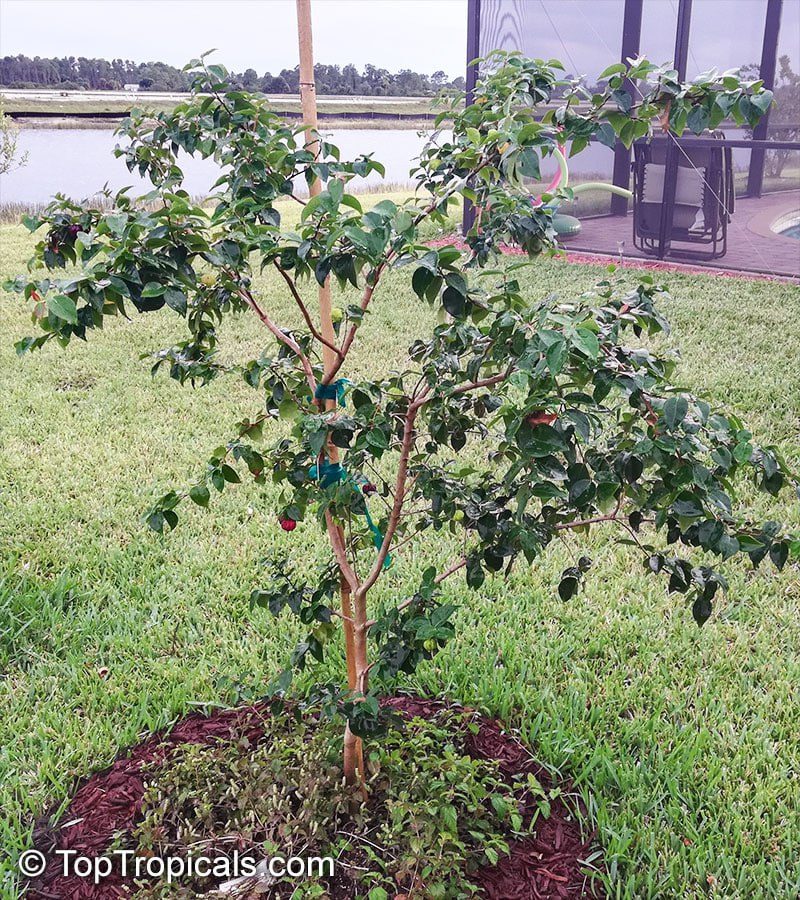
Black Surinam Cherry cv. Lolita (Eugenia uniflora)
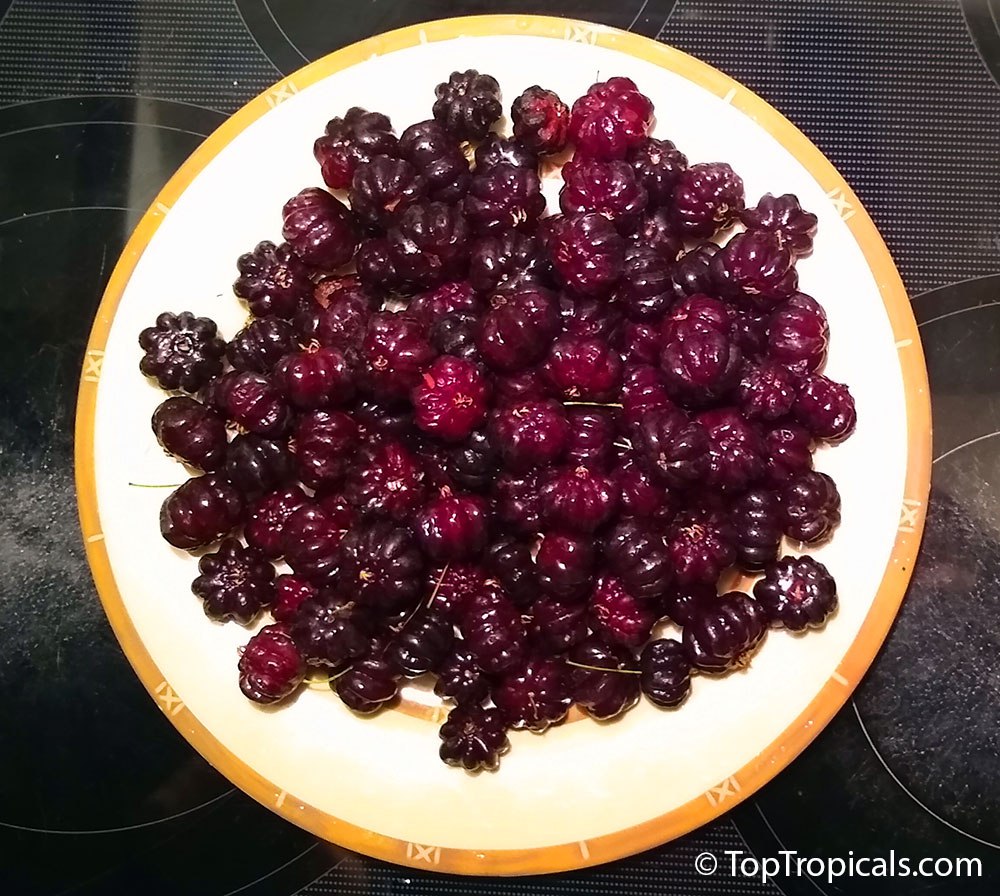
Black Surinam Cherry cv. Lolita (Eugenia uniflora) fruit
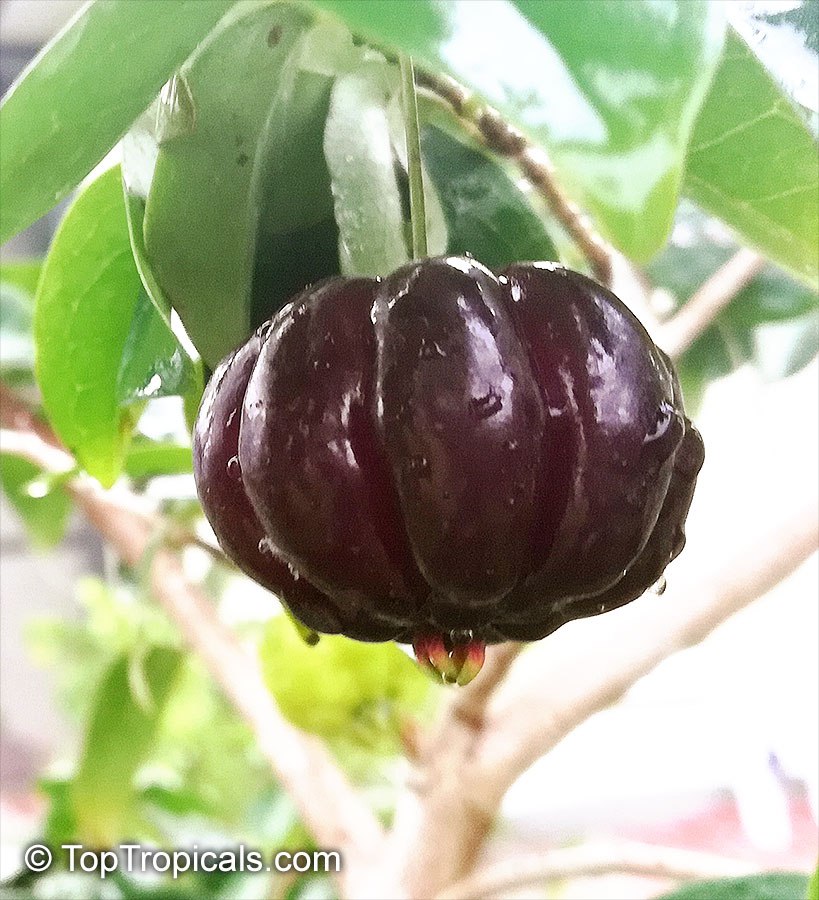
Black Surinam Cherry cv. Lolita (Eugenia uniflora) fruit
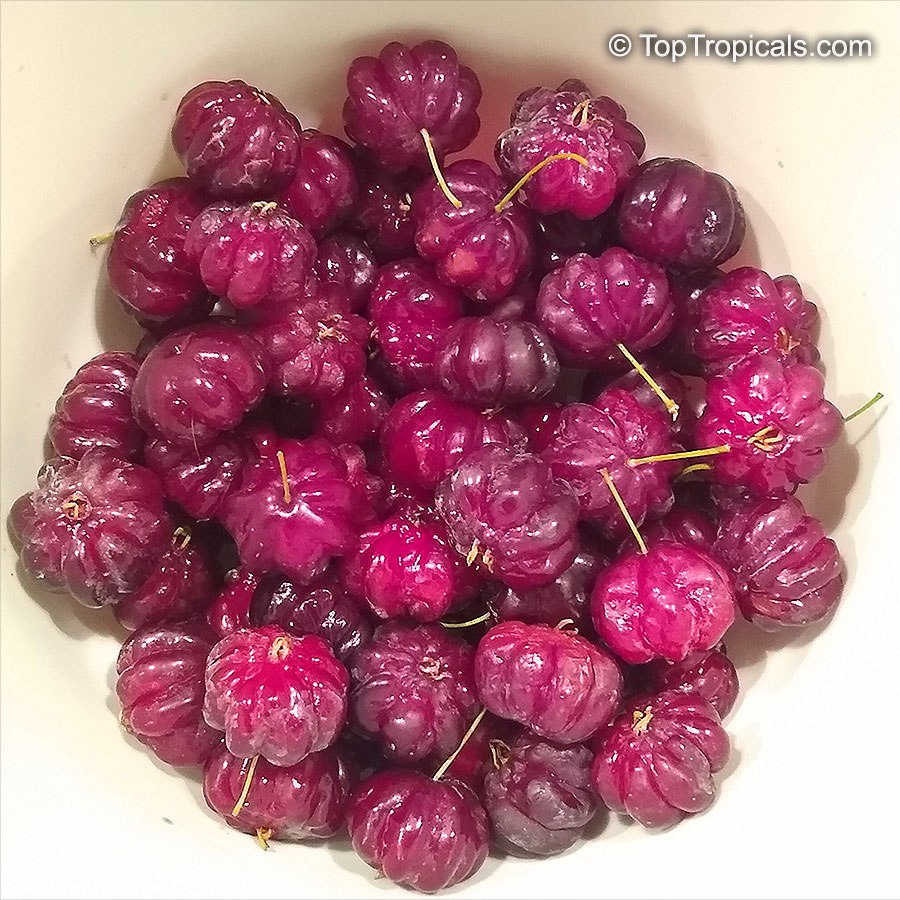
Black Surinam Cherry cv. Lolita (Eugenia uniflora) fruit
- ❣️ Black Surinam Cherry cv. Lolita (Eugenia uniflora) is Sweet, Juicy, and Cold-Hardy!
- ❣️ Lolita Cherry is the cultivar you've been waiting for - also known as Black Star or Pitanga var. Black. This rare variety starts red and ripens to a rich black color, with a flavor tha'’s incredibly sweet, juicy, and free of the typical aftertaste found in regular Surinam cherries.
- ❣️ The fruit is large (1-1.2 inches), packed with juice, and produced by a vigorous, upright, freely branching plant that often fruits in its first year. A reliable and heavy producer, this cherry tree is both ornamental and productive.
- ❣️ Why grow Lolita?
💋 Delicious, black-colored cherries with exceptional sweetness
- 💋 Fast to fruit, even in the first year. Seedlings grow true to type - a rare trait!
- 💋 Cold hardy to the upper 20s F once established. Thrives in USDA zones 9–11 or in containers with winter protection
- 💋 Upright, bushy habit makes it perfect for edible hedge or small garden spaces
- 💋 Hard to find and easy to love, Lolita Black Surinam Cherry is a must-have for tropical fruit collectors.
🛒 Plant a Lolita Cherry and have lots of delicious fruit and juice
📚 More about Lolita Cherry from previous posts:
- 💋Top 10 fruit you'll ever need for your health benefits: #8 Lolita Cherry
- 💋 Who is that Sweet Black Lolita from Surinam?
- 💋Top 10 fast-fruiting trees: #3. Eugenias - Tropical Cherries
- 💋How to make a jam with Surinam Cherry
#Food_Forest #Remedies #Discover
🔴 Join 👉 TopTropicals
Surinam cherry salsa: quick-n-fun exotic recipes
- 🔴Dice Surinam cherries (Eugenia uniflora) with red onion, cilantro, and lime 🍒🔴
Sweet, tart, and perfect for grilled fish 🐟
Surinam Cherry Salsa:
Ingredients
- 1 cup diced Surinam cherries (Eugenia uniflora)
- 1/4 cup chopped red onion
- 2 tbsp chopped cilantro
- Juice of 1 lime
- Salt to taste
Instructions
- Remove seeds and dice Surinam cherries.
- Mix with onion, cilantro, and lime juice.
- Add salt to taste and stir gently.
- Serve chilled with grilled fish or chips.
🛒Plant Surinam Cherry: Red and Black (Lolita)
#Food_Forest #Recipes
🟢 Join 👉 TopTropicals
Dont plant cherries until you see this one!
Cherry of the Rio Grande - Eugenia aggregata
- 🍒 Cherry of the Rio Grande (Eugenia aggregata) is one of those tropical fruits you don't forget once you taste it. The fruit looks like a dark ruby jewel and ripens to almost black, with a sweet, full cherry-like flavor.
- 🍒 Unlike the temperate cherries, this one thrives in warm climates and starts flowering as early as March, keeping the harvest going well into summer.
- 🍒 This little fruit tree that fits anywhere! It's slender, branching, fits neatly in limited spaces or even in a pot, yet still produces plenty of fruit.
- 🍒 Can a tropical cherry really handle freezing temps? Once mature, Cherry of the Rio Grande can handle surprising cold snaps down into the 20s. A tough little tree that gives you a taste of the tropics right in your own backyard!
🛒 From Rio Grande to your garden
#Food_Forest
🟢 Join 👉 TopTropicals
Grumichama jam: quick-n-fun exotic recipes
🔴Cook Grumichama cherries with sugar and lime juice.- 🔴A deep red jam with a cherry-meets-blackberry flavor.
Grumichama Jam: Quick-n-Fun Exotic Recipes
Ingredients
- 2 cups fresh Grumichama cherries (Eugenia brasiliensis)
- 1 cup sugar
- 1 tbsp lime juice
Instructions
- Remove seeds from Grumichama cherries.
- Place fruit in a saucepan with sugar and lime juice.
- Simmer over low heat until thick and glossy, stirring often.
- Pour into sterilized jars and let cool before sealing.
🛒 Plant Grumichama tree (Eugenia brasiliensis)
📚 Learn more:
- ▫️The best tasting and most beautiful tropical cherry
- ▫️Why grow Grumichama? Benefits of Brazilian Eugenia Tree - Cherry of the Tropics
#Food_Forest #Recipes
🟢 Join 👉 TopTropicals
